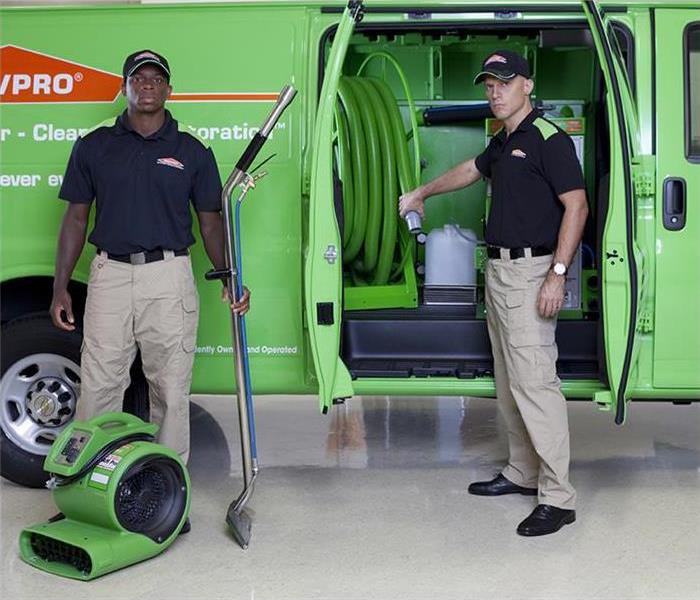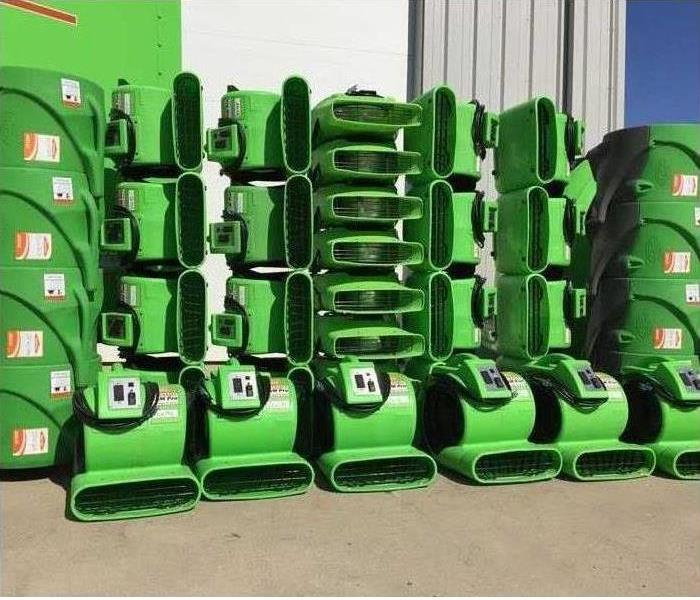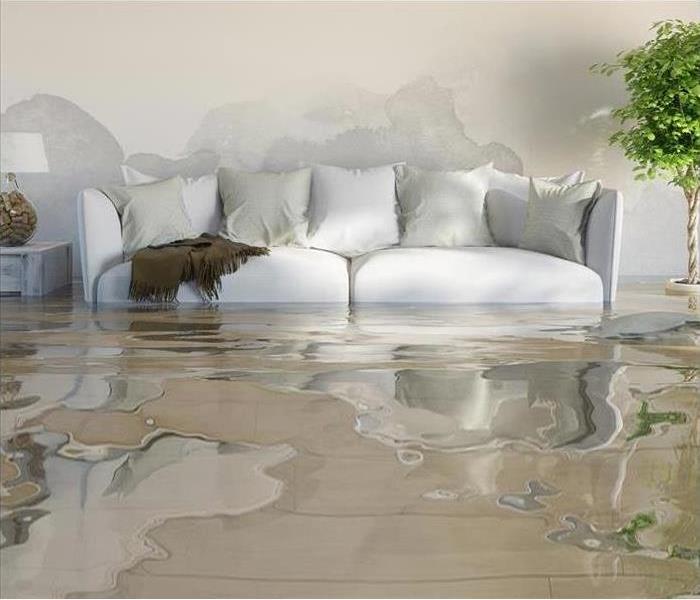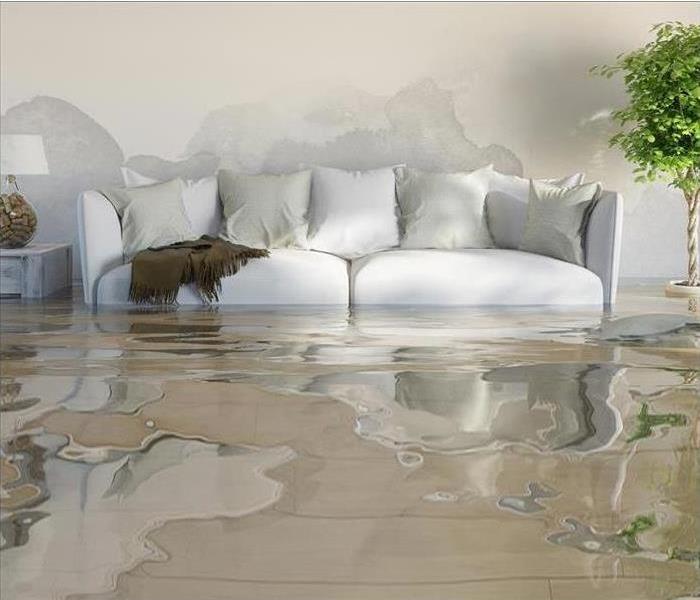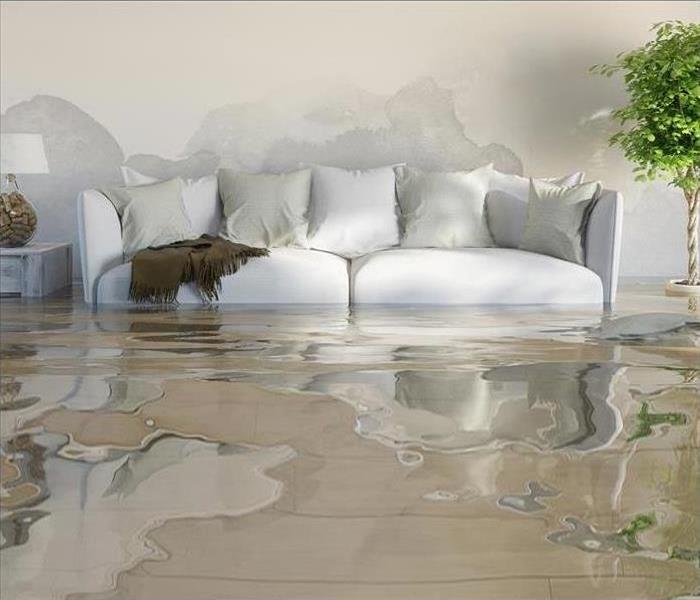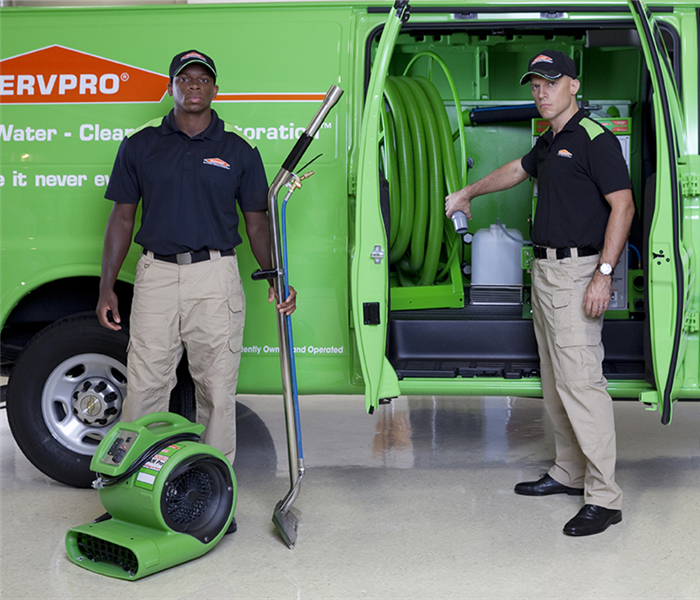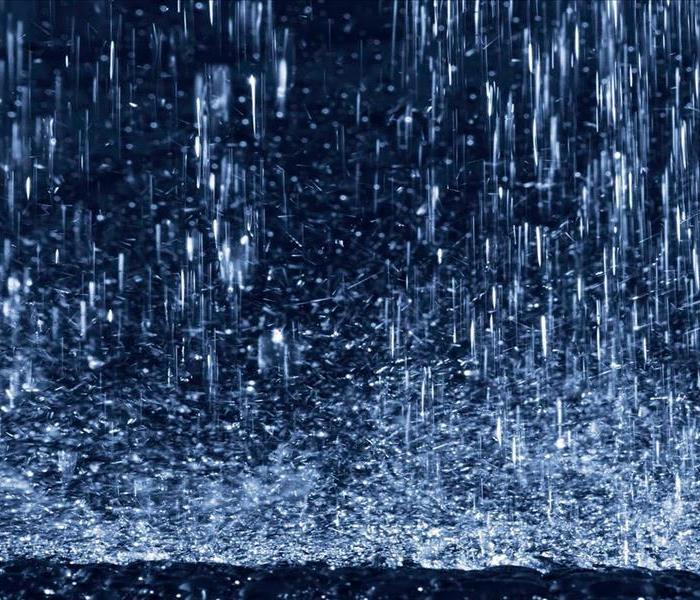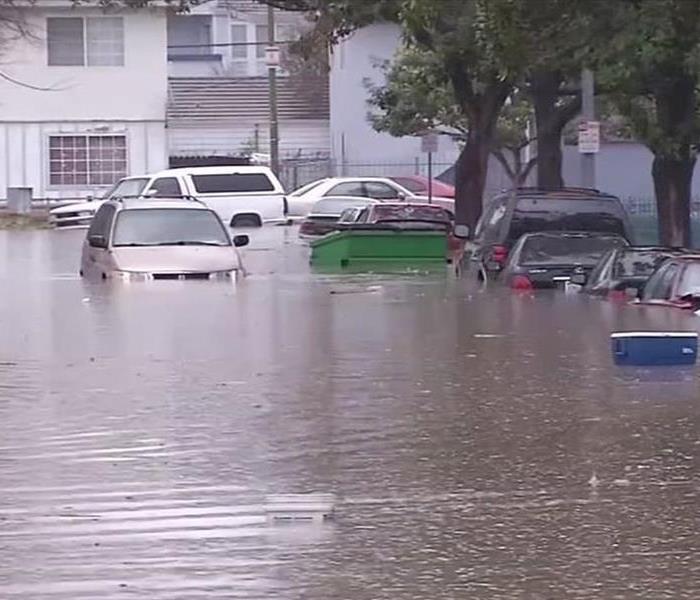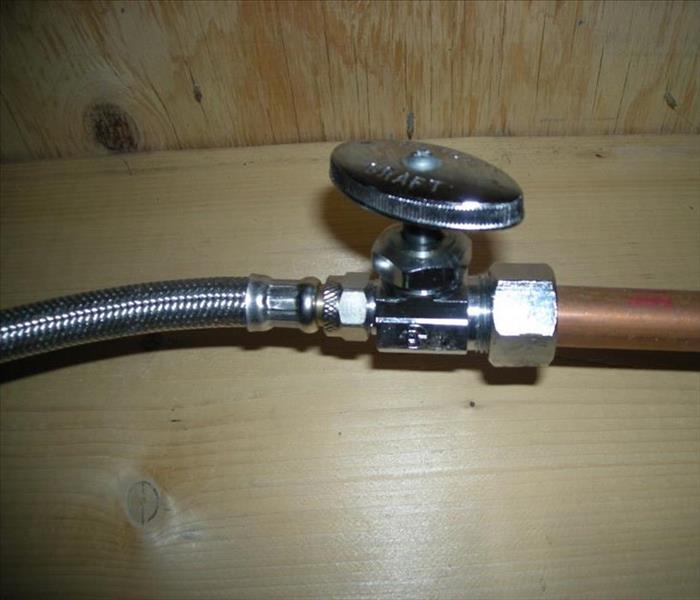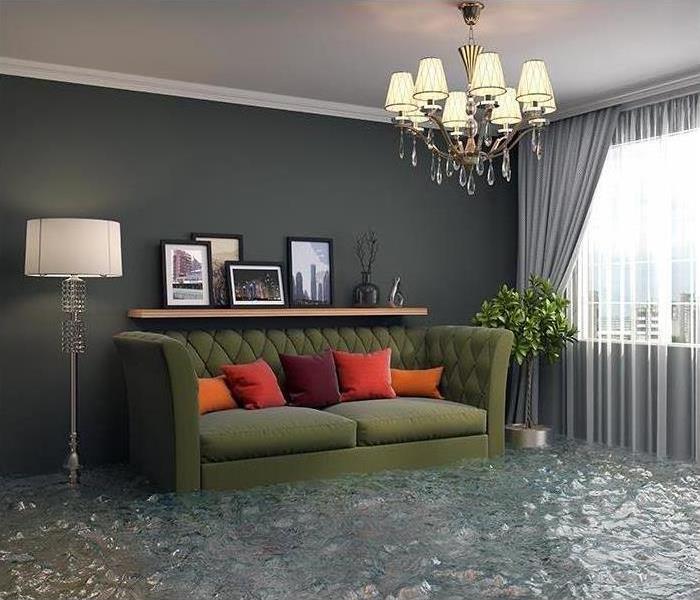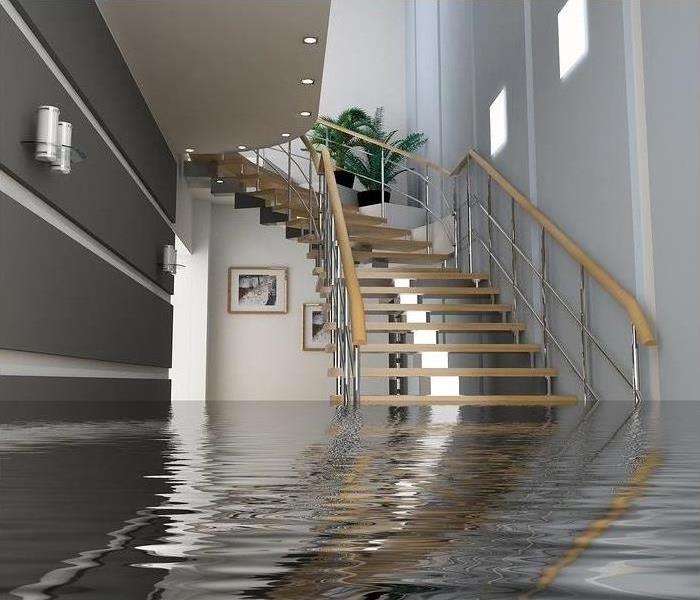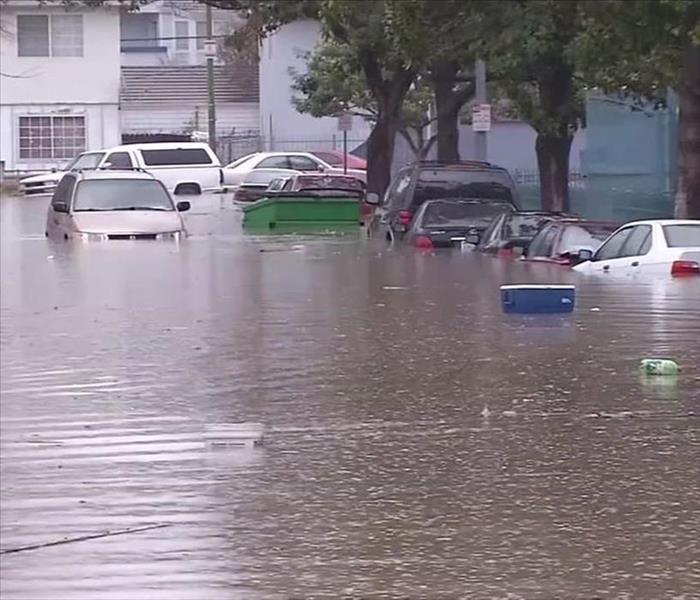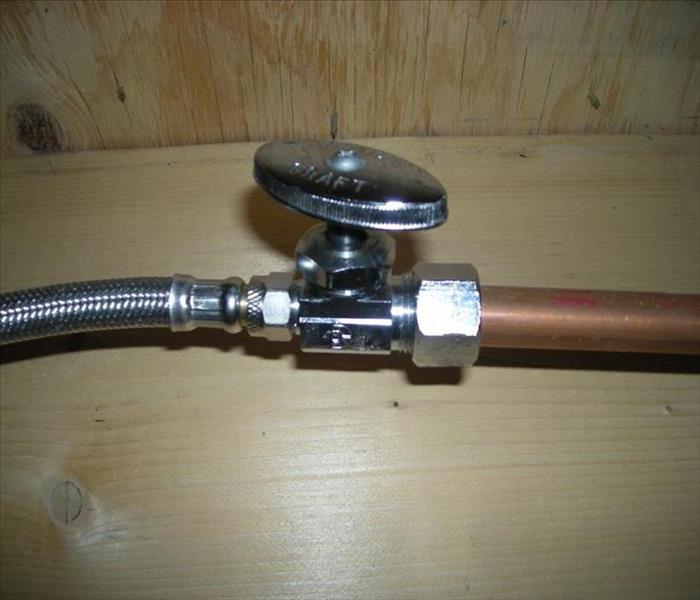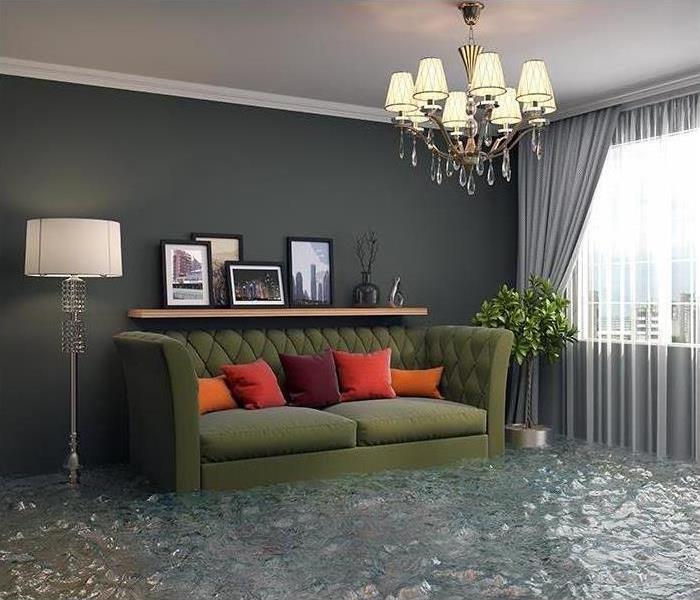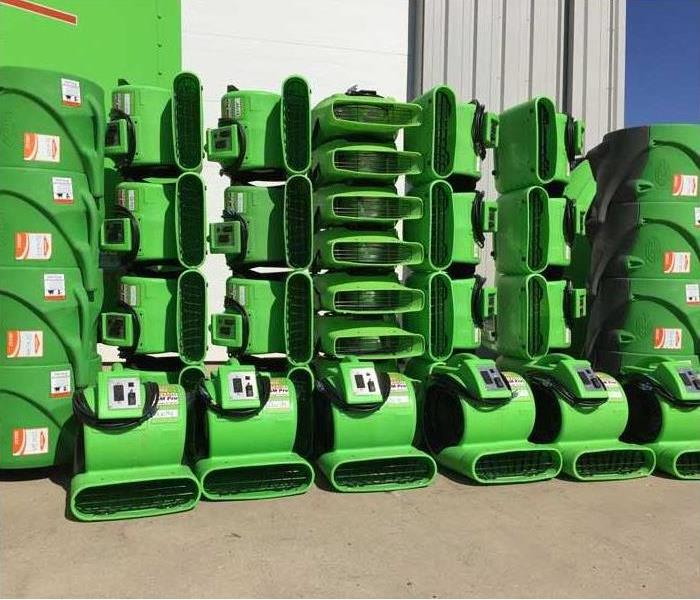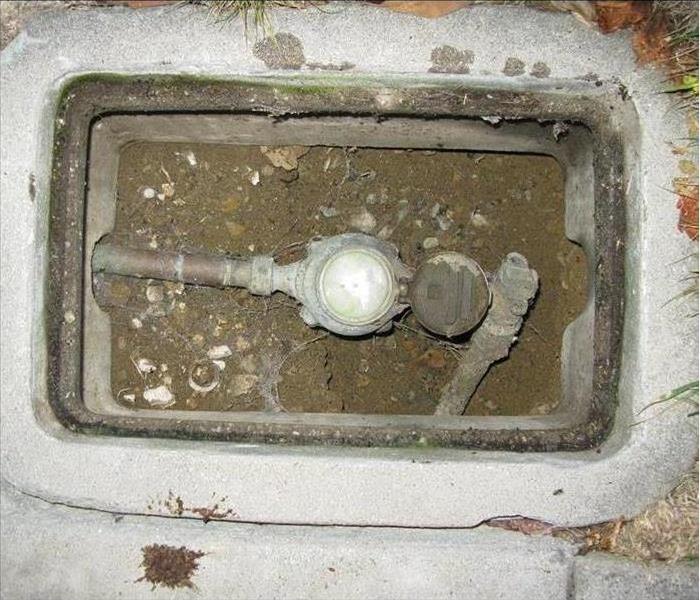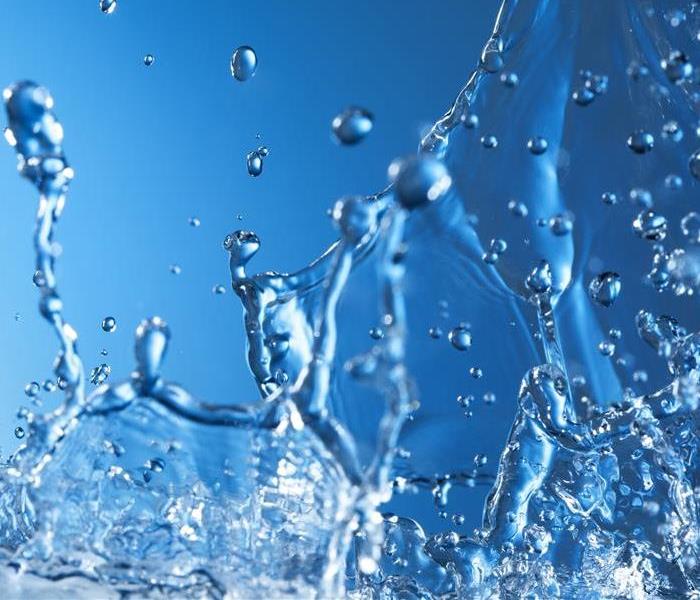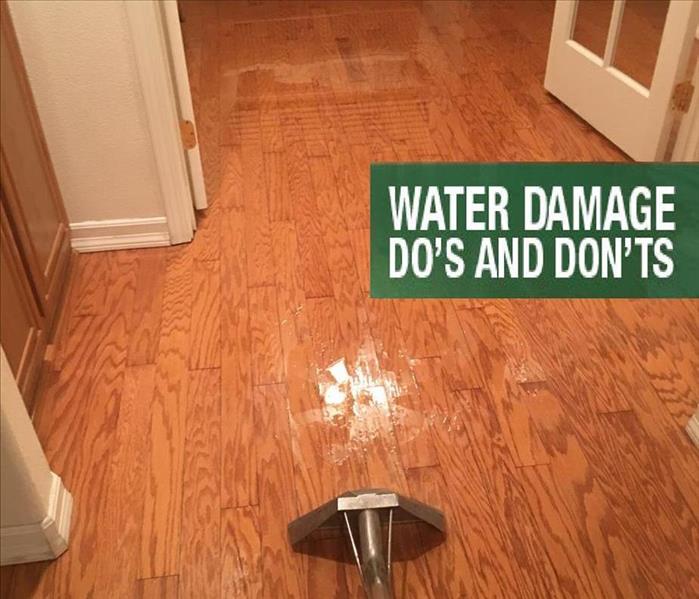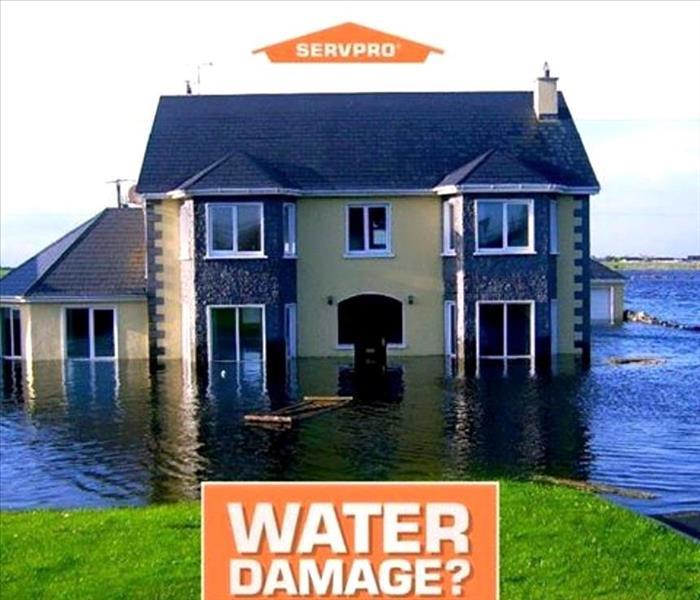Archived Water Damage Blog Posts
LA County 24 Hour Emergency Water Damage Service
7/2/2024 (Permalink)
SERVPRO of Chatsworth/Stevenson Ranch is available 24 hours a day for water emergencies, large or small. When you are dealing with water damage, immediate action is crucial. A delay of just a few hours can greatly increase the severity of the water damage.
We Answer the Phone Ready to Help
Call Today - (818) 842-1400
We understand that when you call us, you may be feeling confused, stressed, and vulnerable. You need an expert to guide you through this crisis. SERVPRO of Burbank has the specific water damage training and experience to help you through this tough time. We specialize in water damage restoration—in fact, it's the cornerstone of our business.
What to Expect
When you call, we will ask several questions regarding your water damage emergency. These questions will help us determine what equipment and resources to bring, including how many trained SERVPRO professionals may be needed.
Our SERVPRO Representative will ask several questions:
- Your name and contact information
- Your insurance information (if applicable)
- The street address of the water-damaged home or business
- When did the flooding or water damage occur?
- What caused the water damage (if known)?
- Is there electricity available (on-site)?
About SERVPRO of Chatsworth/Stevenson Ranch
SERVPRO of Chatsworth/Stevenson Ranch specializes in the cleanup and restoration of residential and commercial property after a fire, smoke or water damage event. Our staff is highly trained in property damage restoration. From initial and ongoing training at SERVPRO’s corporate training facility to regular IICRC-industry certification, rest assured our staff is equipped with the knowledge to restore your property.
Faster to your Chatsworth/Stevenson Ranch Water Damage Event
7/2/2024 (Permalink)
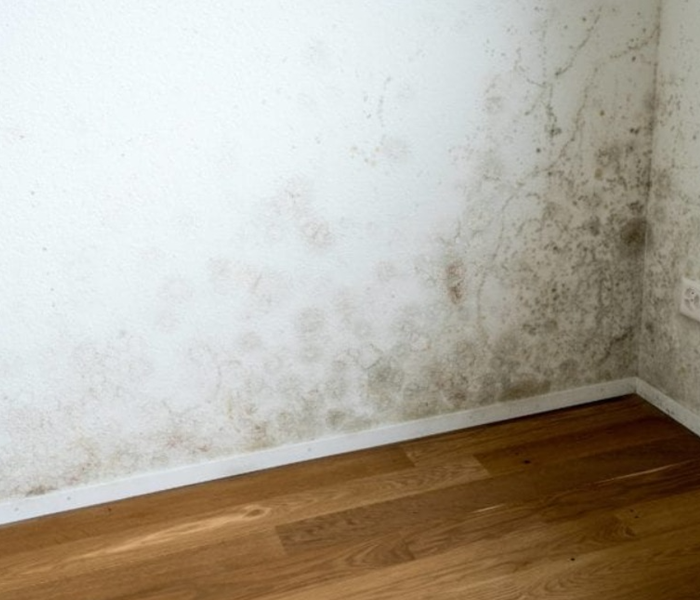 SERVPRO of Chatsworth/Stevenson Ranch provides 24 hour fire and water damage restoration service in LA County
SERVPRO of Chatsworth/Stevenson Ranch provides 24 hour fire and water damage restoration service in LA County
Flooding and water emergencies don’t wait for regular business hours and neither do we. SERVPRO of Chatsworth/Stevenson Ranch provides emergency cleaning and restoration services 24 hours a day, 7 days a week—including all holidays.
Faster To Any Size Disaster
Flooding and water damage is very invasive. Water quickly spreads throughout your home and gets absorbed into floors, walls, furniture, and more. SERVPRO of Chatsworth/Stevenson Ranch arrives quickly and starts the water extraction process almost immediately. This immediate response helps to minimize the damage and the cleaning and restoration costs.
Need Emergency Service? Call Us 24/7 – (818) 842 - 1400
Water Damage Timeline
Within Minutes
- Water quickly spreads throughout your property, saturating everything in its path.
- Water is absorbed into walls, floors, upholstery, and belongings.
- Furniture finishes may bleed, causing permanent staining on carpets.
- Photographs, books, and other paper goods start to swell and warp.
Hours 1 - 24:
- Drywall begins to swell and break down.
- Metal surfaces begin to tarnish.
- Furniture begins to swell and crack.
- Dyes and inks from cloth and paper goods spread and stain.
- A musty odor appears.
48 Hours to 1 Week:
- Mold and mildew may grow and spread.
- Doors, windows, and studs swell and warp.
- Metal begins to rust and corrode.
- Furniture warps and shows signs of mold.
- Paint begins to blister.
- Wood flooring swells and warps.
- Serious biohazard contamination is possible.
More Than 1 Week:
- Restoration time and cost increase dramatically; replacing contaminated materials and structural rebuilding may be extensive.
- Structural safety, mold growth, and biohazard contaminants pose serious risks to occupants.
About SERVPRO of Chatsworth/Stevenson Ranch
SERVPRO of Chatsworth/Stevenson Ranch specializes in the cleanup and restoration of residential and commercial property after a fire, smoke or water damage event. Our staff is highly trained in property damage restoration. From initial and ongoing training at SERVPRO’s corporate training facility to regular IICRC-industry certification, rest assured our staff is equipped with the knowledge to restore your property.
Tips For Rainy Weather
9/26/2022 (Permalink)
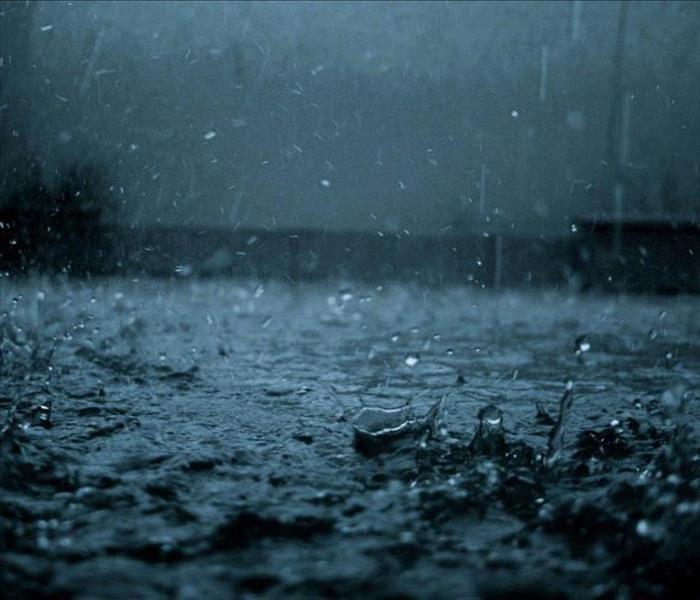 Rain
Rain
Here are some tips for your home and rainy weather!
Tip #1: Check those gutters! This can be a simple but very effective way to prevent unwanted water from entering your home or business. Gutters that are clogged with debris from overhanging trees, trash, or roofing materials can easily clog the drain and shuffle unwanted water your way.
Tip #2: Tarp up any unfinished roofing projects. Going along with our first tip, small openings in the roof of your home and business can quickly become large openings with heavy rain, causing water damage inside your building. Make sure to give your local roofing company a call and get those potential problem areas patched up ASAP.
Tip #3: Examine your window glaze and compound. Often times, glazing compound can shrink during the warmer months, making windows more susceptible to unwanted rain water penetration. Your local contractor can help patch this up for you, ensuring that you are set and ready for even the heaviest of rains! Another helpful tip… make sure you close your windows before going to bed or leaving the home!
And finally, Tip #4 (the most important!): Should you find yourself in a situation where you do have a water damage emergency, call SERVPRO of Chatsworth / Stevenson Ranch. Our staff is prepped and ready to respond and help make your rain disaster, "Like it never even happened."
Water Loss Categories
8/26/2022 (Permalink)
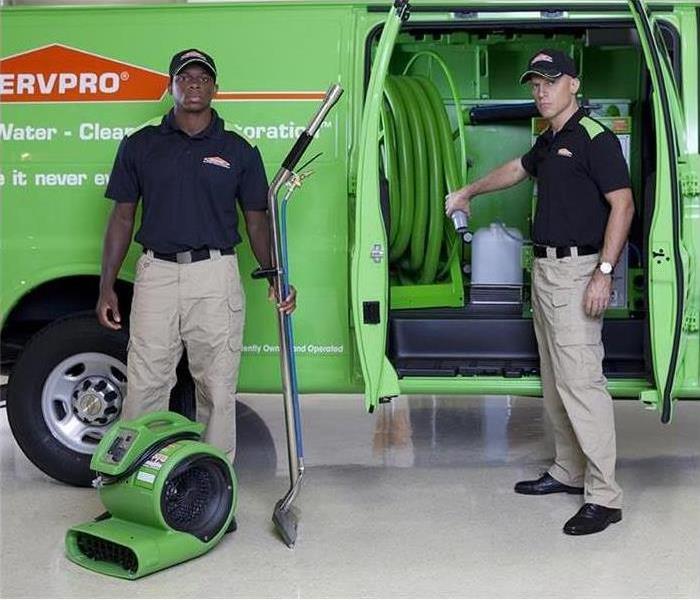 SERVPRO Technicians
SERVPRO Technicians
If you've been in and around a water loss you may have often heard the reference of which category the loss is under. So what exactly does that mean? SERVPRO of Chatsworth / Stevenson Ranch will shed some light on the three categories of a water loss and what they mean.
Category 1: Refers to the source of water as being "clean water" otherwise meaning a source of water that does not pose a substantial threat to humans. Examples:
- Broken water supply line
- Sink or tub overflow
- Appliance malfunction
Category 2: Refers to the source of water as containing a significant degree of chemicals, biological or physical contaminants that cause discomfort or sickness when consumed or exposed to. It is often referred to as "grey water" Examples:
- Toilet bows w/urine (no feces)
- Sump pump failures
- Seepage from washers
Category 3: Referred to as "black water" and is grossly contaminated. This water contains unsanitary agents, harmful bacteria and fungi, causing severe discomfort or sickness. Examples:
- Toilet back flows
For all your water damage needs give us a call at 818-842-1400
All About Air Movers
4/7/2022 (Permalink)
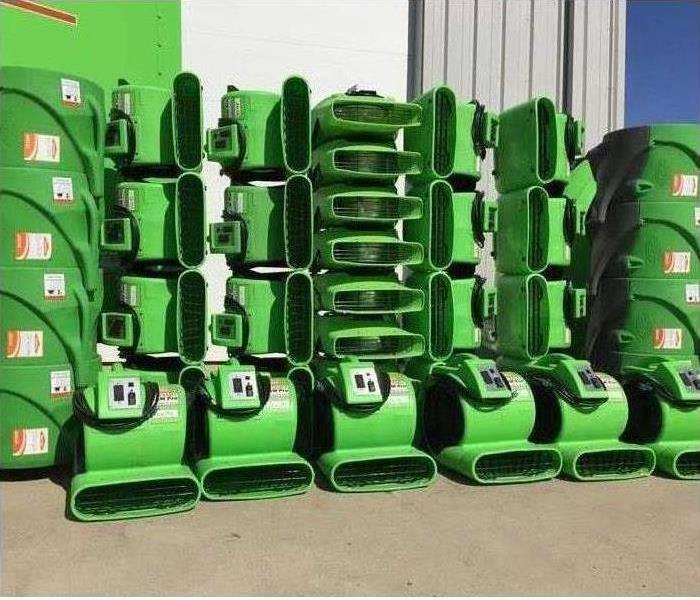 Air Movers
Air Movers
What is an Air Mover?
Air movers are used in construction and water restoration projects, having a wide variety of industrial applications. They are primarily used to increase air circulation, which speeds up water evaporation and reduces drying time. Compressed air is also used to maximize airflow in a blower fan or air mover. Some other names for air movers are “industrial air blowers”, “commercial blower fans” or “floor drying fans”.
Air movers are an essential tool when mitigation services are needed due to water damage or restoring flood or disaster damage. Some advantages of drying a building with the use of air movers are as follows:
- High velocity, making them ideal for cooling and ventilation purposes
- Reduces water damage dry out time to carpets and floors, as well as wall cavities behind drywall
- Removing fumes or gases from a work space
TYPES OF AIR MOVER UNITS
The type of air blower affects the speed and direction of airflow and the amount of space that can be covered by the air mover. There are three major types of air blower units used in most commercial dry out scenarios:
- Axial: Axial blowers are designed to move large amounts of air across a wide space. These tend to be larger air movers that produce high airflow. Unlike centrifugal air movers, which can direct air in several directions, axial air movers only move air horizontally. They’re ideal for drying walls or top-down drying treatments on carpets. They’re sometimes used for ventilation and equipment cooling.
- Centrifugal: This type offers a more compact air mover designed for spot treatments. Centrifugal air movers draw air from several sources and direct it to a particular spot. They are often used in restoration work to dry hard to reach areas like under cabinets and in crawl spaces and closets. Most centrifugal air movers can be adjusted to provide airflow at a few different angles. Centrifugal blowers are heavy-duty air movers that produce lower CFM than axial air movers.
Keeping Your Home Healthy
4/7/2022 (Permalink)
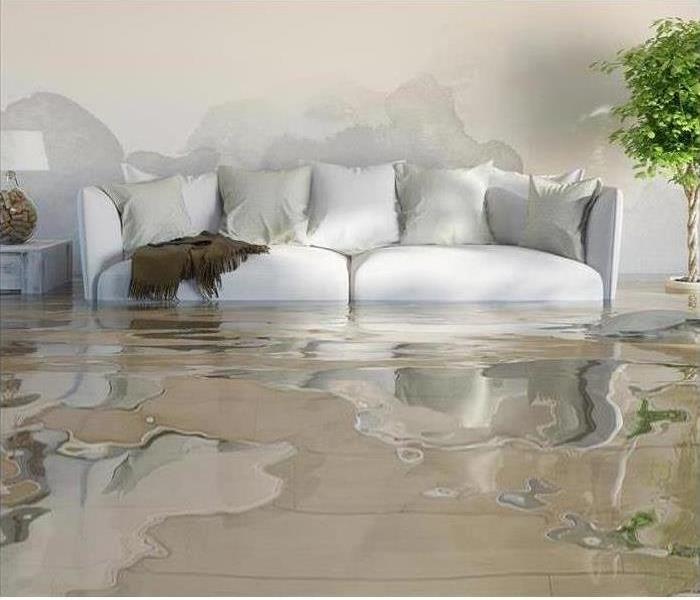 House Flood
House Flood
Hey SERVPRO of Chatsworth/Stevenson Ranch readers! We get a lot of water damage calls here. We here at SERVPRO know that there can be a lot of questions that come along with discovering water damage in your home, especially when it comes to your health and potential health effects. Our friends over at SERVPRO Saginaw put together some great thoughts on the topic. Read on to gain insight on what hazards can occur as a result of water damage and why it’s best to let the professionals handle the clean up.
The obvious result of water damage is structural---whether severe or cosmetic. And unfortunately, structural damage can wind up costing you thousands of dollars in repairs. The result of water damage can also cause the growth of toxic mold and mildew. If left untreated, this mold proliferation can cause health effects. So let’s get to it.
Hazard #1: Mold Growth -
- According to the Environmental Protection Agency (EPA), you should have your property dried and cleaned within 24-48 hours after the initial water onslaught. This practice will help decrease the likelihood of mold growth. Although you may be capable of starting the drying and cleaning processes, it is important to know that mold can grow in areas of the home that you can't see. Thus, simply cleaning and drying your carpet will not always be effective in preventing mold growth, especially if there is a large quantity of unwanted water. The mold can still grow in different areas of your home, including the carpet padding, underneath wallpaper, behind the drywall, along ceilings and baseboards, in voids and furniture.
- As noted by the EPA, there are several health effects that can result from exposure to mold. It is also important to note that the mold clean up process, performed by you, can lead to exposure to fungi. For this reason, professional water damage restoration technicians from SERVPRO will wear special protective gear and utilize state-of-the-art equipment for mold cleanup and the prevention of mold dispersion throughout your Saginaw home.
Hazard #2: Exposure to Sewage -
- Exposure to raw sewage is dangerous because it contains parasites, viruses, and bacteria such as E. coli. The sewage can also contain pharmaceuticals, chemicals, and pesticides. The EPA has stated that contaminated water can lead to the contraction of illnesses such as tuberculosis, dysentery, hepatitis, tetanus, and cholera. Safely stay away from the hazard of sewage water--blackwater--and let the experts execute the cleanup and dry out.
So… Let The Professionals at SERVPRO of Chatsworth/Stevenson Ranch Assist You!
- We are passionate about helping our customers make their water damage loss “Like it never even happened.” So no matter if it’s a leaky pipe underneath your bathroom sink or a busted water main that’s flooded your entire property, our team will get you taken care of so you can get back to a safe and HEALTHY state.
Call us 24 hours a day, 7 days a week. We are always here to help!
Preventing Water Damages
4/6/2022 (Permalink)
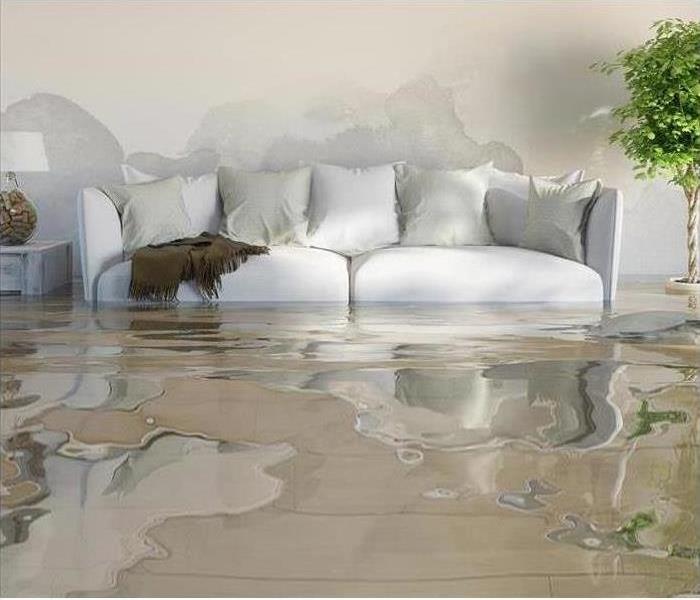 Water Damage
Water Damage
Water Damage is something no homeowner wants to deal with. It often comes unexpectedly and without warning. Water damage can cause structural damage and if not treated quickly can eventually result in mold. But good news! There are some easy tips to avoid water damage in your home.
- Make sure your home has good drainage, clean the rain gutters often and make sure they are clear. If you live on a hill, slope your yard away from the home so that it will direct water away from the home.
- If you already have leaks, make sure they are fixed immediately. Check for dark spots under pipes or on the ceiling.
- Maintain your roof, if there are missing shingles replace them immediately.
SERVPRO of Chatsworth / Stevenson Ranch is faster to any size disaster!
Call 24 hours a day, 7 days a week at 818-842-1400
Tips During A Flash Flood
2/17/2022 (Permalink)
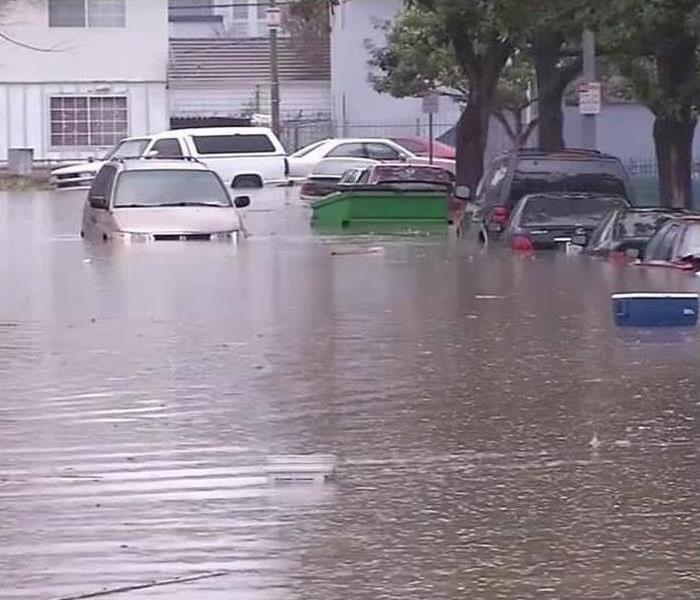 Flash Flood
Flash Flood
Flash floods can happen at any moment. They are often a significant source of rainfall in Southern California, but with that can come water damage to homes and commercial properties. Here are some tips to follow after a flood.
1. Only return to your home or property when it is deemed safe to do so. If there was a mandatory evacuation, wait until that is lifted to return.
2. Inspect your home or property. Look for leaks, water damage, hillsides, or slope movement.
3. Drive carefully, many roads will be covered with mud, debris, and often holes.
4. Be vigilant for mudslides as they can happen days after the flood after the soil dries.
5. Be prepared for the next flood by preparing slopes and high risk areas during the winter time.
SERVPRO of Chatsworth/Stevenson Ranch is faster to any size disaster!
818-842-1400
Rainy Weather Tips
9/24/2021 (Permalink)
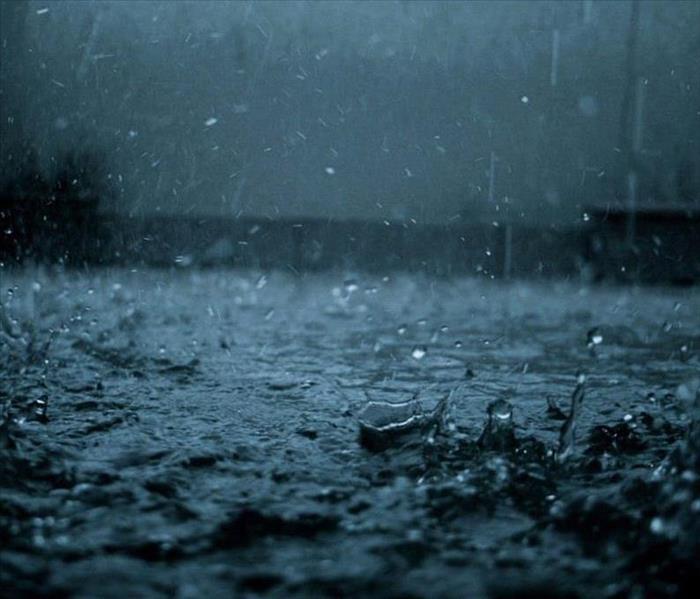 Rain
Rain
Here are some tips for your home and rainy weather!
Tip #1: Check those gutters! This can be a simple but very effective way to prevent unwanted water from entering your home or business. Gutters that are clogged with debris from overhanging trees, trash, or roofing materials can easily clog the drain and shuffle unwanted water your way.
Tip #2: Tarp up any unfinished roofing projects. Going along with our first tip, small openings in the roof of your home and business can quickly become large openings with heavy rain, causing water damage inside your building. Make sure to give your local roofing company a call and get those potential problem areas patched up ASAP.
Tip #3: Examine your window glaze and compound. Often times, glazing compound can shrink during the warmer months, making windows more susceptible to unwanted rain water penetration. Your local contractor can help patch this up for you, ensuring that you are set and ready for even the heaviest of rains! Another helpful tip… make sure you close your windows before going to bed or leaving the home!
And finally, Tip #4 (the most important!): Should you find yourself in a situation where you do have a water damage emergency, call SERVPRO of Chatsworth / Stevenson Ranch. Our staff is prepped and ready to respond and help make your rain disaster, "Like it never even happened."
Categories Of Water Loss
8/25/2021 (Permalink)
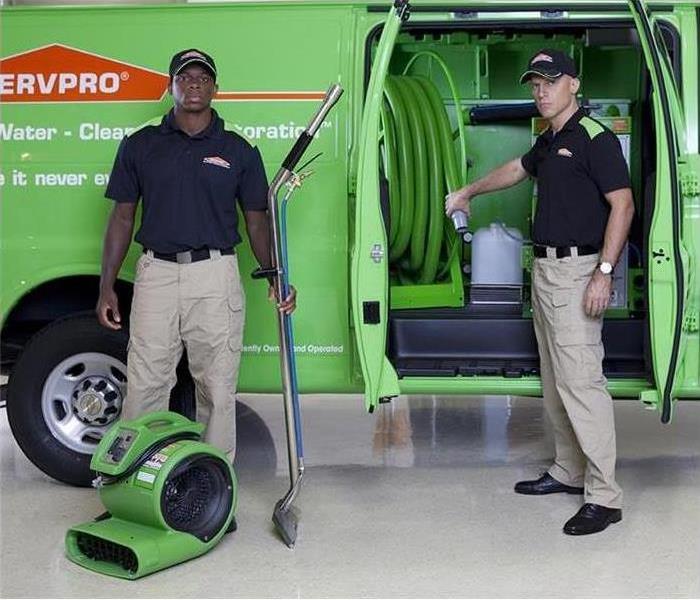 SERVPRO Technicians
SERVPRO Technicians
If you've been in and around a water loss you may have often heard the reference of which category the loss is under. So what exactly does that mean? SERVPRO of Chatsworth / Stevenson Ranch will shed some light on the three categories of a water loss and what they mean.
Category 1: Refers to the source of water as being "clean water" otherwise meaning a source of water that does not pose a substantial threat to humans. Examples:
- Broken water supply line
- Sink or tub overflow
- Appliance malfunction
Category 2: Refers to the source of water as containing a significant degree of chemicals, biological or physical contaminants that cause discomfort or sickness when consumed or exposed to. It is often referred to as "grey water" Examples:
- Toilet bows w/urine (no feces)
- Sump pump failures
- Seepage from washers
Category 3: Referred to as "black water" and is grossly contaminated. This water contains unsanitary agents, harmful bacteria and fungi, causing severe discomfort or sickness. Examples:
- Toilet back flows
For all your water damage needs give us a call at 818-842-1400
Keep Your Home Healthy
4/5/2021 (Permalink)
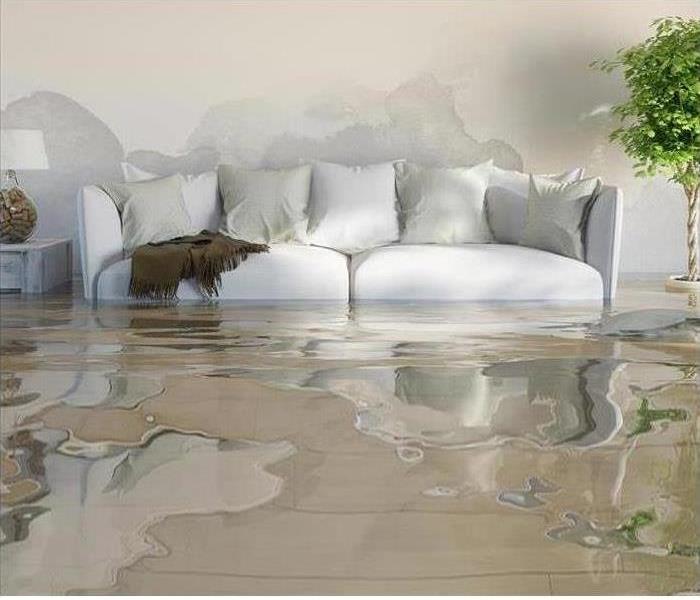 House Flood
House Flood
Hey SERVPRO of Chatsworth/Stevenson Ranch readers! We get a lot of water damage calls here. We here at SERVPRO know that there can be a lot of questions that come along with discovering water damage in your home, especially when it comes to your health and potential health effects. Our friends over at SERVPRO Saginaw put together some great thoughts on the topic. Read on to gain insight on what hazards can occur as a result of water damage and why it’s best to let the professionals handle the clean up.
The obvious result of water damage is structural---whether severe or cosmetic. And unfortunately, structural damage can wind up costing you thousands of dollars in repairs. The result of water damage can also cause the growth of toxic mold and mildew. If left untreated, this mold proliferation can cause health effects. So let’s get to it.
Hazard #1: Mold Growth -
- According to the Environmental Protection Agency (EPA), you should have your property dried and cleaned within 24-48 hours after the initial water onslaught. This practice will help decrease the likelihood of mold growth. Although you may be capable of starting the drying and cleaning processes, it is important to know that mold can grow in areas of the home that you can't see. Thus, simply cleaning and drying your carpet will not always be effective in preventing mold growth, especially if there is a large quantity of unwanted water. The mold can still grow in different areas of your home, including the carpet padding, underneath wallpaper, behind the drywall, along ceilings and baseboards, in voids and furniture.
- As noted by the EPA, there are several health effects that can result from exposure to mold. It is also important to note that the mold clean up process, performed by you, can lead to exposure to fungi. For this reason, professional water damage restoration technicians from SERVPRO will wear special protective gear and utilize state-of-the-art equipment for mold cleanup and the prevention of mold dispersion throughout your Saginaw home.
Hazard #2: Exposure to Sewage -
- Exposure to raw sewage is dangerous because it contains parasites, viruses, and bacteria such as E. coli. The sewage can also contain pharmaceuticals, chemicals, and pesticides. The EPA has stated that contaminated water can lead to the contraction of illnesses such as tuberculosis, dysentery, hepatitis, tetanus, and cholera. Safely stay away from the hazard of sewage water--blackwater--and let the experts execute the cleanup and dry out.
So… Let The Professionals at SERVPRO of Chatsworth/Stevenson Ranch Assist You!
- We are passionate about helping our customers make their water damage loss “Like it never even happened.” So no matter if it’s a leaky pipe underneath your bathroom sink or a busted water main that’s flooded your entire property, our team will get you taken care of so you can get back to a safe and HEALTHY state.
Call us 24 hours a day, 7 days a week. We are always here to help!
Air Movers
4/5/2021 (Permalink)
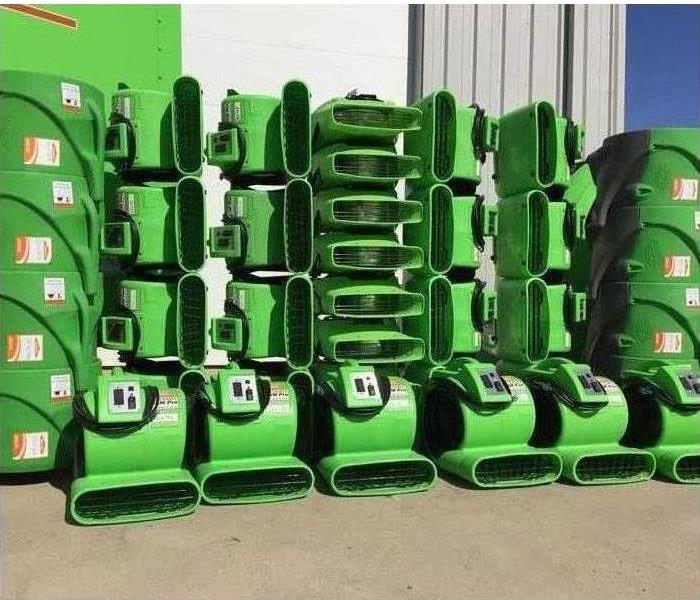 Air Movers
Air Movers
What is an Air Mover?
Air movers are used in construction and water restoration projects, having a wide variety of industrial applications. They are primarily used to increase air circulation, which speeds up water evaporation and reduces drying time. Compressed air is also used to maximize airflow in a blower fan or air mover. Some other names for air movers are “industrial air blowers”, “commercial blower fans” or “floor drying fans”.
Air movers are an essential tool when mitigation services are needed due to water damage or restoring flood or disaster damage. Some advantages of drying a building with the use of air movers are as follows:
- High velocity, making them ideal for cooling and ventilation purposes
- Reduces water damage dry out time to carpets and floors, as well as wall cavities behind drywall
- Removing fumes or gases from a work space
TYPES OF AIR MOVER UNITS
The type of air blower affects the speed and direction of airflow and the amount of space that can be covered by the air mover. There are three major types of air blower units used in most commercial dry out scenarios:
- Axial: Axial blowers are designed to move large amounts of air across a wide space. These tend to be larger air movers that produce high airflow. Unlike centrifugal air movers, which can direct air in several directions, axial air movers only move air horizontally. They’re ideal for drying walls or top-down drying treatments on carpets. They’re sometimes used for ventilation and equipment cooling.
- Centrifugal: This type offers a more compact air mover designed for spot treatments. Centrifugal air movers draw air from several sources and direct it to a particular spot. They are often used in restoration work to dry hard to reach areas like under cabinets and in crawl spaces and closets. Most centrifugal air movers can be adjusted to provide airflow at a few different angles. Centrifugal blowers are heavy-duty air movers that produce lower CFM than axial air movers.
Prevent Water Damages
4/1/2021 (Permalink)
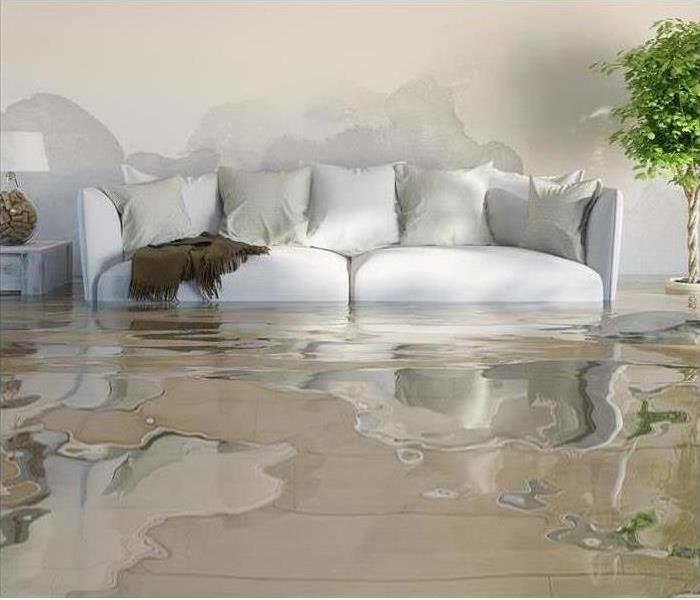 Living Room Flooded
Living Room Flooded
3/5/2020
Water Damage is something no homeowner wants to deal with. It often comes unexpectedly and without warning. Water damage can cause structural damage and if not treated quickly can eventually result in mold. But good news! There are some easy tips to avoid water damage in your home.
- Make sure your home has good drainage, clean the rain gutters often and make sure they are clear. If you live on a hill, slope your yard away from the home so that it will direct water away from the home.
- If you already have leaks, make sure they are fixed immediately. Check for dark spots under pipes or on the ceiling.
- Maintain your roof, if there are missing shingles replace them immediately.
SERVPRO of Chatsworth / Stevenson Ranch is faster to any size disaster!
Call 24 hours a day, 7 days a week at 818-842-1400
Flash Flood Tips
2/18/2021 (Permalink)
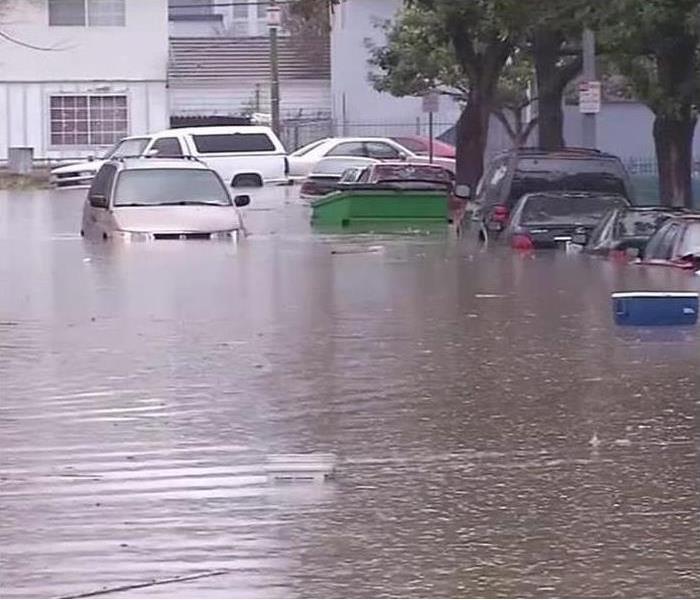 Flash Flood in City
Flash Flood in City
Flash floods can happen at any moment. They are often a significant source of rainfall in Southern California, but with that can come water damage to homes and commercial properties. Here are some tips to follow after a flood.
1. Only return to your home or property when it is deemed safe to do so. If there was a mandatory evacuation, wait until that is lifted to return.
2. Inspect your home or property. Look for leaks, water damage, hillsides, or slope movement.
3. Drive carefully, many roads will be covered with mud, debris, and often holes.
4. Be vigilant for mudslides as they can happen days after the flood after the soil dries.
5. Be prepared for the next flood by preparing slopes and high risk areas during the winter time.
SERVPRO of Chatsworth/Stevenson Ranch is faster to any size disaster!
818-842-1400
Rain Tips!
9/25/2020 (Permalink)
The Heavy Rains have hit Southern California! Here are some tips for your home and the rainy weather!
Tip #1: Check those gutters! This can be a simple but very effective way to prevent unwanted water from entering your home or business. Gutters that are clogged with debris from overhanging trees, trash, or roofing materials can easily clog the drain and shuffle unwanted water your way.
Tip #2: Tarp up any unfinished roofing projects. Going along with our first tip, small openings in the roof of your home and business can quickly become large openings with heavy rain, causing water damage inside your building. Make sure to give your local roofing company a call and get those potential problem areas patched up ASAP.
Tip #3: Examine your window glaze and compound. Often times, glazing compound can shrink during the warmer months, making windows more susceptible to unwanted rain water penetration. Your local contractor can help patch this up for you, ensuring that you are set and ready for even the heaviest of rains! Another helpful tip… make sure you close your windows before going to bed or leaving the home!
And finally, Tip #4 (the most important!): Should you find yourself in a situation where you do have a water damage emergency, call SERVPRO of Chatsworth / Stevenson Ranch. Our staff is prepped and ready to respond and help make your rain disaster, "Like it never even happened."
Water Loss Categories
8/14/2020 (Permalink)
If you've been in and around a water loss you may have often heard the reference of which category the loss is under. So what exactly does that mean? SERVPRO of Chatsworth / Stevenson Ranch will shed some light on the three categories of a water loss and what they mean.
Category 1: Refers to the source of water as being "clean water" otherwise meaning a source of water that does not pose a substantial threat to humans. Examples:
- Broken water supply line
- Sink or tub overflow
- Appliance malfunction
Category 2: Refers to the source of water as containing a significant degree of chemicals, biological or physical contaminants that cause discomfort or sickness when consumed or exposed to. It is often referred to as "grey water" Examples:
- Toilet bows w/urine (no feces)
- Sump pump failures
- Seepage from washers
Category 3: Referred to as "black water" and is grossly contaminated. This water contains unsanitary agents, harmful bacteria and fungi, causing severe discomfort or sickness. Examples:
- Toilet back flows
For all your water damage needs give us a call at 818-842-1400
What are Air Movers?
3/27/2020 (Permalink)
What is an Air Mover?
Air movers are used in construction and water restoration projects, having a wide variety of industrial applications. They are primarily used to increase air circulation, which speeds up water evaporation and reduces drying time. Compressed air is also used to maximize airflow in a blower fan or air mover. Some other names for air movers are “industrial air blowers”, “commercial blower fans” or “floor drying fans”.
Air movers are an essential tool when mitigation services are needed due to water damage or restoring flood or disaster damage. Some advantages of drying a building with the use of air movers are as follows:
- High velocity, making them ideal for cooling and ventilation purposes
- Reduces water damage dry out time to carpets and floors, as well as wall cavities behind drywall
- Removing fumes or gases from a work space
TYPES OF AIR MOVER UNITS
The type of air blower affects the speed and direction of airflow and the amount of space that can be covered by the air mover. There are three major types of air blower units used in most commercial dry out scenarios:
- Axial: Axial blowers are designed to move large amounts of air across a wide space. These tend to be larger air movers that produce high airflow. Unlike centrifugal air movers, which can direct air in several directions, axial air movers only move air horizontally. They’re ideal for drying walls or top-down drying treatments on carpets. They’re sometimes used for ventilation and equipment cooling.
- Centrifugal: This type offers a more compact air mover designed for spot treatments. Centrifugal air movers draw air from several sources and direct it to a particular spot. They are often used in restoration work to dry hard to reach areas like under cabinets and in crawl spaces and closets. Most centrifugal air movers can be adjusted to provide airflow at a few different angles. Centrifugal blowers are heavy-duty air movers that produce lower CFM than axial air movers.
Preventing Water Damages
3/5/2020 (Permalink)
Water Damage is something no homeowner wants to deal with. It often comes unexpectedly and without warning. Water damage can cause structural damage and if not treated quickly can eventually result in mold. But good news! There are some easy tips to avoid water damage in your home.
- Make sure your home has good drainage, clean the rain gutters often and make sure they are clear. If you live on a hill, slope your yard away from the home so that it will direct water away from the home.
- If you already have leaks, make sure they are fixed immediately. Check for dark spots under pipes or on the ceiling.
- Maintain your roof, if there are missing shingles replace them immediately.
SERVPRO of Chatsworth / Stevenson Ranch is faster to any size disaster!
Call 24 hours a day, 7 days a week at 818-842-1400
Tip that YOU can do!
3/5/2020 (Permalink)
Hello SERVPRO of Chatsworth Readers!
Ever found yourself in a situation where your home or business has been affected by a flood? What can you do in those precious moments before help arrives to respond to the situation?
We have another article to share from our friends over at FEMA with some tips on what YOU can do to clean up after a flood. And don't forget the most important tip of them all - for a team that is faster to any disaster, including your water damage at your home or business, call SERVPRO of Chatsworth for help!
Read on:
"Flooding is the most common natural disaster in the United States and can happen anywhere.
Flooding can occur slowly over many days leaving enough time to evacuate in advance or prepare to be home for several days without power, water, or access to roads or services. Or, as in the case of flash flooding, it can happen very quickly with little or no warning and you may need to move quickly to make it to higher ground.
In the event of a flood, America’s PrepareAthon! How to Prepare for a Flood offers the following tips to reduce the risk of damage to your home or business:
- Elevate critical utilities, such as electrical panels, switches, sockets, wiring, appliances, and heating systems;
- In areas with repetitive flooding, consider elevating the building;
- Waterproof basement areas and make sure your sump pump is working; and
- Move furniture, valuables, and important documents to a safe place.
After a flood, timing is of the essence. Water left in your home for a significant period of time can cause mold, and even in some cases, structural damage. It is important to clean your home as soon as possible following a flood.
Keep in mind that extreme care is necessary when cleaning out your home following a flood. America’s PrepareAthon!’s how-to flood guide also provides recommendations on how to best protect yourself and your property after a flood:
- Avoid wading in floodwaters as they often contain dangerous debris like broken glass, metal, dead animals, or contaminants, such as sewage, gasoline, and oil;
- Do not enter a damaged building unless it has been cleared by authorities. There may be structural damage to the foundation, electrical hazards, or hidden damage;
- Take precautions and wear appropriate protective equipment, such as gloves, safety glasses, rubber boots, and masks that protect you from dust and other dangerous particles;
- Do not touch electrical equipment if it is wet or you’re standing in water;
Keeping Your Home Healthy
2/19/2020 (Permalink)
Hey SERVPRO of Chatsworth/Stevenson Ranch readers! We get a lot of water damage calls here. We here at SERVPRO know that there can be a lot of questions that come along with discovering water damage in your home, especially when it comes to your health and potential health hazards. Our friends over at SERVPRO Saginaw put together some great thoughts on the topic. Read on to gain insight on what hazards can occur as a result of water damage and why it’s best to let the professionals handle the clean up.
The obvious result of water damage is structural---whether severe or cosmetic. And unfortunately, structural damage can wind up costing you thousands of dollars in repairs. The result of water damage can also cause the growth of toxic mold and mildew. If left untreated, this mold proliferation can cause health effects. So let’s get to it.
Hazard #1: Mold Growth -
- According to the Environmental Protection Agency (EPA), you should have your property dried and cleaned within 24-48 hours after the initial water onslaught. This practice will help decrease the likelihood of mold growth. Although you may be capable of starting the drying and cleaning processes, it is important to know that mold can grow in areas of the home that you can't see. Thus, simply cleaning and drying your carpet will not always be effective in preventing mold growth, especially if there is a large quantity of unwanted water. The mold can still grow in different areas of your home, including the carpet padding, underneath wallpaper, behind the drywall, along ceilings and baseboards, in voids and furniture.
- As noted by the EPA, there are several health hazards that can result from exposure to mold. It is also important to note that the mold clean up process, performed by you, can lead to exposure to fungi. For this reason, professional water damage restoration technicians from SERVPRO will wear special protective gear and utilize state-of-the-art equipment for mold cleanup and the prevention of mold dispersion throughout your Saginaw home.
Hazard #2: Exposure to Sewage -
- Exposure to raw sewage is dangerous because it contains parasites, viruses, and bacteria such as E. coli. The sewage can also contain pharmaceuticals, chemicals, and pesticides. The EPA has stated that contaminated water can lead to the contraction of illnesses such as tuberculosis, dysentery, hepatitis, tetanus, and cholera. Safely stay away from the hazard of sewage water--blackwater--and let the experts execute the cleanup and dry out.
So… Let The Professionals at SERVPRO of Chatsworth/Stevenson Ranch Assist You!
- We are passionate about helping our customers make their water damage loss “Like it never even happened.” So no matter if it’s a leaky pipe underneath your bathroom sink or a busted water main that’s flooded your entire property, our team will get you taken care of so you can get back to a safe and HEALTHY state.
Call us 24 hours a day, 7 days a week. We are always here to help!
Categories of a Water Loss
8/15/2019 (Permalink)
If you've been in and around a water loss you may have often heard the reference of which category the loss is under. So what exactly does that mean? SERVPRO of Chatsworth / Stevenson Ranch will shed some light on the three categories of a water loss and what they mean.
Category 1: Refers to the source of water as being "clean water" otherwise meaning a source of water that does not pose a substantial threat to humans. Examples:
- Broken water supply line
- Sink or tub overflow
- Appliance malfunction
Category 2: Refers to the source of water as containing a significant degree of chemicals, biological or physical contaminants that cause discomfort or sickness when consumed or exposed to. It is often referred to as "grey water" Examples:
- Toilet bows w/urine (no feces)
- Sump pump failures
- Seepage from washers
Category 3: Referred to as "black water" and is grossly contaminated. This water contains unsanitary agents, harmful bacteria and fungi, causing severe discomfort or sickness. Examples:
- Toilet back flows
For all your water damage needs give us a call at 818-842-1400
The Rains are Here
3/20/2019 (Permalink)
The Heavy Rains have hit Southern California! Here are some tips for your home and the rainy weather!
Tip #1: Check those gutters! This can be a simple but very effective way to prevent unwanted water from entering your home or business. Gutters that are clogged with debris from overhanging trees, trash, or roofing materials can easily clog the drain and shuffle unwanted water your way.
Tip #2: Tarp up any unfinished roofing projects. Going along with our first tip, small openings in the roof of your home and business can quickly become large openings with heavy rain, causing water damage inside your building. Make sure to give your local roofing company a call and get those potential problem areas patched up ASAP.
Tip #3: Examine your window glaze and compound. Often times, glazing compound can shrink during the warmer months, making windows more susceptible to unwanted rain water penetration. Your local contractor can help patch this up for you, ensuring that you are set and ready for even the heaviest of rains! Another helpful tip… make sure you close your windows before going to bed or leaving the home!
And finally, Tip #4 (the most important!): Should you find yourself in a situation where you do have a water damage emergency, call SERVPRO of Chatsworth / Stevenson Ranch. Our staff is prepped and ready to respond and help make your rain disaster,"Like it never even happened."
Preventing Water Damage
3/6/2019 (Permalink)
Water Damage is something no home owner wants to deal with. It often comes unexpectedly and without warning. Water damage can cause structural damage and mold. But good news! There are some easy tips to avoid a water damage in your home.
1. Make sure your home has good drainage, clean the rain gutters often and make sure they are clear. If you live on a hill, slope your yard away from the home so that it will direct water away from the home.
2. If you already have leaks, make sure they are fixed immediately. Check for dark spots under pipes or on the ceiling.
3. Maintain your roof, if there are missing shingles replace them immediately.
SERVPRO of Chatsworth / Stevenson Ranch is faster to any size disaster!
818-842-1400
What to do After a Flood
3/5/2019 (Permalink)
Flash floods can happen at any moment. They are often a significant source of rainfall in Southern California, but with that can come water damage to homes and commercial properties. Here are some tips to follow after a flood.
1. Only return to your home or property when it is deemed safe to do so. If there was a mandatory evacuation, wait until that is lifted to return.
2. Inspect your home or property. Look for leaks, water damage, hillsides, or slope movement.
3. Drive carefully, many roads will be covered with mud, debris, and often holes.
4. Be vigilant for mudslides as they can happen days after the flood after the soil dries.
5. Be prepared for the next flood by preparing slopes and high risk areas during the winter time.
SERVPRO of Chatsworth / Stevenson Ranch is faster to any size disaster!
818-842-1400
Water Shut Offs
2/19/2019 (Permalink)
Frequently when a home or business owner needs to shut the water off to an appliance or at the “main”, there are questions where to look for the valves and how they operate. The need to shut of the water may become urgent when a pipe breaks inside the building or even in the main line from the street to the property.
The cause of a broken pipe can be from aging plumbing and fixtures, construction mishaps, and ground and buildings shifting from earthquakes common to Southern California. Certainly, the time to become familiar with the valve locations and function is not when there is an emergency.
The pictures below illustrate the water valves and locations common to sinks, water heaters, toilets and at the “main” source from the city service. In each case, there is a valve to isolate the leaking plumbing.
The Meter: The Meter is located next to the street at the curb area. This is where the water branches off from the City and comes to your property. There is a shut-off located underneath the meter box lid. Shutting the water off here, will turn the water off to the entire house exterior and interior, including pools and irrigation.
Main Service: From the “meter box” a water line is ran up to the front of the house to a hose bib (water spigot). Usually where the hose is located (newer homes in garage). This shut-off valve turns the water off to the inside of the home, excluding irrigation.
The Water Heater: From the “main service” the plumbing lines then provide water to the water heater. The water heater shut-off valve is located at the top of the water heater next to the water flex lines.
Angle Stops: From the “water heater” hot and cold water lines split off to provide water to plumbing fixtures including those in the bathrooms, kitchen, laundry, etc. You may have heard of an angle stop before. A shiny oval piece behind the toilet or underneath the sink. Behind the toilet is 1 angle stop and underneath a sink there are 2.
It is important as home and business owners to know how to turn off your water supply in the case of an emergency. If water damage still occurs, SERVPRO of Chatsworth / Stevenson Ranch provides water remediation services for commercial and residential properties
Air Movers
11/5/2018 (Permalink)
What’s an Air Mover?
Air movers (aka “industrial air blowers”, “commercial blower fans” or “floor drying fans”) are used in construction and water restoration projects, having a wide variety of industrial applications. Their primarily used to increase air circulation, which speeds up water evaporation and reduces drying time. Compressed air is also used to maximize airflow in a blower fan or air mover.
Air movers are an essential tool when mitigation services are needed due to water damage or restoring flood or disaster damage. Some advantages of drying a building with the use of air movers are as follows:
- Low power draw
- High velocity, making them ideal for cooling and ventilation purposes
- Reduces water damage dry out time to carpets and floors, as well as wall cavities behind drywall
- Dries concrete and paint
- Removing fumes or gases from a workspace
TYPES OF AIR MOVER UNITS
The type of air blower affects the speed and direction of airflow and the amount of space that can be covered by the air mover. There are three major types of air blower units used in most commercial dry out scenarios:
- Axial: Axial blowers are designed to move large amounts of air across a wide space. These tend to be larger air movers that produce high airflow. Unlike centrifugal air movers, which can direct air in several directions, axial air movers only move air horizontally. They’re ideal for drying walls or top-down drying treatments on carpets. They’re sometimes used for ventilation and equipment cooling.
- Centrifugal: This type offers a more compact air mover designed for spot treatments. Centrifugal air movers draw air from several sources and direct it to a particular spot. They are often used in restoration work to dry hard to reach areas like under cabinets and in crawl spaces and closets. Most centrifugal air movers can be adjusted to provide airflow at a few different angles. Centrifugal blowers are heavy-duty air movers that produce lower CFM than axial air movers.
- Compact: Compact air movers are versatile enough to be used for both large floor areas and small spot drying. With 1/4 horsepower motors, they still have the power to quickly and effectively dry areas, while also being quieter than centrifugal air movers and taking up less space. Small and lightweight, compact air movers are the perfect solution for drying small, hard-to-reach spaces such as closets, corners or under counters.
We at SERVPRO of Chatsworth / Stevenson Ranch will always assess each water damage situation independently and if our highly trained IICRC certified technicians determine that air movers are a necessary step to speed up the drying process, we have all the resources needed to help make it “Like it never even happened®.”
We sincerely hope these unfortunate situations never happen but if they do we are standing by 24/7 and can be reached at (818) 842-1400.
Water Damage Hazards
8/9/2018 (Permalink)
Hey SERVPRO Chastsworth / Stevenson Ranch readers! We’ve been getting a lot of calls about water damages lately. We here at SERVPRO know that there can a lot of questions that come along with discovering a water damage in your home, especially when it comes to your health and potential health hazards when a loss is discovered. Our friends over at SERVPRO Saginaw put together some great thoughts on the topic. Read on to gain insight on what hazards can occur as a result of a water damage and why it’s best to let the professionals handle the clean up.
The obvious result of water damage is structural---whether severe or cosmetic. And unfortunately, structural damage can wind up costing you thousands of dollars in repairs. The result of water damage can also cause the growth of toxic mold and mildew. If left untreated, this mold proliferation can be cause health effects. So let’s get to it.
Hazard #1: Mold Growth -
According to the Environmental Protection Agency (EPA), you should have your property dried and cleaned within 24-48 hours after the initial water onslaught. This practice will help decrease the likelihood of mold growth. Although you may be capable of starting the drying and cleaning processes, it is important to know that mold can grow in areas of the home that you can't see. Thus, simply cleaning and drying your carpet will not always be effective in preventing mold growth, especially if there is a large quantity of unwanted water. The mold can still grow in different areas of your home, including the carpet padding, underneath wallpaper, behind the drywall, along ceilings and baseboards, in voids and furniture.
As noted by the EPA, there are several health hazards that can result from exposure to mold. It is also important to note that the mold clean up process, performed by you, can lead to exposure to fungi. For this reason, professional water damage restoration technicians from SERVPRO will wear special protective gear and utilize state-of-the-art equipment for mold cleanup and the prevention of mold dispersion throughout your Saginaw home.
Hazard #2: Exposure to Sewage -
Exposure to raw sewage is dangerous because it contains parasites, viruses, and bacteria such as E. coli. The sewage can also contain pharmaceuticals, chemicals, and pesticides. The EPA has stated that contaminated water can lead to the contraction of illnesses such as tuberculosis, dysentery, hepatitis, tetanus, and cholera. Safely stay away from the hazard of sewage water--blackwater--and let the experts execute the cleanup and dry out.
So… Let The Professionals at SERVPRO of Chatsworth / Stevenson Ranch Assist You!
We are passionate about helping our customers make their water damage loss “Like it never even happened.” So no matter if it’s a leaky pipe underneath your bathroom sink or a busted water main that’s flooded your entire property, our team will get you taken care of so you can get back to a safe and HEALTHY state.
Rain Rain Rain!
3/22/2018 (Permalink)
The Heavy Rains have hit Southern California! Here are some tips for your home and the rainy weather!
Tip #1: Check those gutters! This can be a simple but very effective way to prevent unwanted water from entering your home or business. Gutters that are clogged with debris from overhanging trees, trash, or roofing materials can easily clog the drain and shuffle unwanted water your way.
Tip #2: Tarp up any unfinished roofing projects. Going along with our first tip, small openings in the roof of your home and business can quickly become large openings with heavy rain, causing water damage inside your building. Make sure to give your local roofing company a call and get those potential problem areas patched up ASAP.
Tip #3: Examine your window glaze and compound. Often times, glazing compound can shrink during the warmer months, making windows more susceptible to unwanted rain water penetration. Your local contractor can help patch this up for you, ensuring that you are set and ready for even the heaviest of rains! Another helpful tip… make sure you close your windows before going to bed or leaving the home!
And finally, Tip #4 (the most important!): Should you find yourself in a situation where you do have a water damage emergency, call SERVPRO Chatsworth / Stevenson Ranch. Our staff is prepped and ready to respond and help make your rain disaster,"Like it never even happened."
Easy Ways to Prevent Water Damage
3/8/2018 (Permalink)
Water Damage is something no home owner wants to deal with. It often comes unexpectedly and without warning. Water damage can cause structural damage and mold. But good news! There are some easy tips to avoid a water damage in your home.
1. Make sure your home has good drainage, clean the rain gutters often and make sure they are clear. If you live on a hill, slope your yard away from the home so that it will direct water away from the home.
2. If you already have leaks, make sure they are fixed immediately. Check for dark spots under pipes or on the ceiling.
3. Maintain your roof, if there are missing shingles replace them immediately.
SERVPRO of Chatsworth / Stevenson Ranch is faster to any size disaster!
818-842-1400
After a Flood
3/6/2018 (Permalink)
Flash floods can happen at any moment. They are often a significant source of rainfall in Southern California, but with that can come water damage to homes and commercial properties. Here are some tips to follow after a flood.
1. Only return to your home or property when it is deemed safe to do so. If there was a mandatory evacuation, wait until that is lifted to return.
2. Inspect your home or property. Look for leaks, water damage, hillsides, or slope movement.
3. Drive carefully, many roads will be covered with mud, debris, and often holes.
4. Be vigilant for mudslides as they can happen days after the flood after the soil dries.
5. Be prepared for the next flood by preparing slopes and high risk areas during the winter time.
SERVPRO of Chatsworth / Stevenson Ranch is faster to any size disaster!
818-842-1400
Shutoff Valves
2/23/2018 (Permalink)
Frequently when a home or business owner needs to shut the water off to an appliance or at the “main”, there are questions where to look for the valves and how they operate. The need to shut of the water may become urgent when a pipe breaks inside the building or even in the main line from the street to the property.
The cause of a broken pipe can be from aging plumbing and fixtures, construction mishaps, and ground and buildings shifting from earthquakes common to Southern California. Certainly, the time to become familiar with the valve locations and function is not when there is an emergency.
The pictures below illustrate the water valves and locations common to sinks, water heaters, toilets and at the “main” source from the city service. In each case, there is a valve to isolate the leaking plumbing.
The Meter: The Meter is located next to the street at the curb area. This is where the water branches off from the City and comes to your property. There is a shut-off located underneath the meter box lid. Shutting the water off here, will turn the water off to the entire house exterior and interior, including pools and irrigation.
Main Service: From the “meter box” a water line is ran up to the front of the house to a hose bib (water spigot). Usually where the hose is located (newer homes in garage). This shut-off valve turns the water off to the inside of the home, excluding irrigation.
The Water Heater: From the “main service” the plumbing lines then provide water to the water heater. The water heater shut-off valve is located at the top of the water heater next to the water flex lines.
Angle Stops: From the “water heater” hot and cold water lines split off to provide water to plumbing fixtures including those in the bathrooms, kitchen, laundry, etc. You may have heard of an angle stop before. A shiny oval piece behind the toilet or underneath the sink. Behind the toilet is 1 angle stop and underneath a sink there are 2.
It is important as home and business owners to know how to turn off your water supply in the case of an emergency. If water damage still occurs, SERVPRO of Chatsworth / Stevenson Ranch provides water remediation services for commercial and residential properties.
Protect your home from Water Damage
2/23/2018 (Permalink)
Water damage is one of the most common disruptions for homeowners. It usually happens at a time when you least expect it. Luckily SERVPRO of Chatsworth / Stevenson Ranch has some tips on how you can protect your home from the unexpected water damage!
- Irreplaceable valuables should be protected. Try to water proof them by sealing them in plastic bags and storing them in a higher place.
- Monitor your drains. Make sure they are clean and clear for water flow.
- Make sure your roof is sealed and protected. Monitor monthly to make sure it is being well taken care of.
- Monitor your tiles and grout in heavily wet areas such as the bathroom and kitchen. Look for cracks and re-seal if necessary.
- Monitor your appliance hoses.
- Turn off your water before a long trip away.
- Regularly have your water heater serviced.
These are just some of the small tips that could help prevent a major water damage in your home. SERVPRO is faster to any size disaster. If the problem should arise, give us a call at 818-842-1400
What is an Air Mover?
10/25/2017 (Permalink)
What’s an Air Mover?
Air movers (aka “industrial air blowers”, “commercial blower fans” or “floor drying fans”) are used in construction and water restoration projects, having a wide variety of industrial applications. Their primarily used to increase air circulation, which speeds up water evaporation and reduces drying time. Compressed air is also used to maximize airflow in a blower fan or air mover.
Air movers are an essential tool when mitigation services are needed due to water damage or restoring flood or disaster damage. Some advantages of drying a building with the use of air movers are as follows:
- Low power draw
- High velocity, making them ideal for cooling and ventilation purposes
- Reduces water damage dry out time to carpets and floors, as well as wall cavities behind drywall
- Dries concrete and paint
- Removing fumes or gases from a workspace
TYPES OF AIR MOVER UNITS
The type of air blower affects the speed and direction of airflow and the amount of space that can be covered by the air mover. There are three major types of air blower units used in most commercial dry out scenarios:
- Axial: Axial blowers are designed to move large amounts of air across a wide space. These tend to be larger air movers that produce high airflow. Unlike centrifugal air movers, which can direct air in several directions, axial air movers only move air horizontally. They’re ideal for drying walls or top-down drying treatments on carpets. They’re sometimes used for ventilation and equipment cooling.
- Centrifugal: This type offers a more compact air mover designed for spot treatments. Centrifugal air movers draw air from several sources and direct it to a particular spot. They are often used in restoration work to dry hard to reach areas like under cabinets and in crawl spaces and closets. Most centrifugal air movers can be adjusted to provide airflow at a few different angles. Centrifugal blowers are heavy-duty air movers that produce lower CFM than axial air movers.
- Compact: Compact air movers are versatile enough to be used for both large floor areas and small spot drying. With 1/4 horsepower motors, they still have the power to quickly and effectively dry areas, while also being quieter than centrifugal air movers and taking up less space. Small and lightweight, compact air movers are the perfect solution for drying small, hard-to-reach spaces such as closets, corners or under counters.
We at SERVPRO of Chatsworth will always assess each water damage situation independently and if our highly trained IICRC certified technicians determine that air movers are a necessary step to speed up the drying process, we have all the resources needed to help make it “Like it never even happened®.”
We sincerely hope these unfortunate situations never happen but if they do we are standing by 24/7 and can be reached at (818) 842-1400.
Hazards of Water Damage
7/31/2017 (Permalink)
Hey SERVPRO Chatsworth/Stevenson Ranch readers! We’ve been getting a lot of calls about water damages lately. We here at SERVPRO know that there can a lot of questions that come along with discovering a water damage in your home, especially when it comes to your health and potential health hazards when a loss is discovered. Our friends over at SERVPRO Saginaw put together some great thoughts on the topic. Read on to gain insight on what hazards can occur as a result of a water damage and why it’s best to let the professionals handle the clean up.
The obvious result of water damage is structural---whether severe or cosmetic. And unfortunately, structural damage can wind up costing you thousands of dollars in repairs. The result of water damage can also cause the growth of toxic mold and mildew. If left untreated, this mold proliferation can be cause health effects. So let’s get to it.
Hazard #1: Mold Growth -
According to the Environmental Protection Agency (EPA), you should have your property dried and cleaned within 24-48 hours after the initial water onslaught. This practice will help decrease the likelihood of mold growth. Although you may be capable of starting the drying and cleaning processes, it is important to know that mold can grow in areas of the home that you can't see. Thus, simply cleaning and drying your carpet will not always be effective in preventing mold growth, especially if there is a large quantity of unwanted water. The mold can still grow in different areas of your home, including the carpet padding, underneath wallpaper, behind the drywall, along ceilings and baseboards, in voids and furniture.
As noted by the EPA, there are several health hazards that can result from exposure to mold. It is also important to note that the mold clean up process, performed by you, can lead to exposure to fungi. For this reason, professional water damage restoration technicians from SERVPRO will wear special protective gear and utilize state-of-the-art equipment for mold cleanup and the prevention of mold dispersion throughout your Saginaw home.
Hazard #2: Exposure to Sewage -
Exposure to raw sewage is dangerous because it contains parasites, viruses, and bacteria such as E. coli. The sewage can also contain pharmaceuticals, chemicals, and pesticides. The EPA has stated that contaminated water can lead to the contraction of illnesses such as tuberculosis, dysentery, hepatitis, tetanus, and cholera. Safely stay away from the hazard of sewage water--blackwater--and let the experts execute the cleanup and dry out.
So… Let The Professionals at SERVPRO Chatsworth/Stevenson Ranch Assist You!
We are passionate about helping our customers make their water damage loss “like it never even happened”. So no matter if it’s a leaky pipe underneath your bathroom sink or a busted water main that’s flooded your entire property, our team will get you taken care of so you can get back to a safe and HEALTHY state
Where Maintenance can Keep Your Chatsworth/Stevenson Ranch Home Free of Floods
4/7/2017 (Permalink)

Keeping certain objects and systems in your home clean, repaired, and modern is the first step in securing the structure from future floods and disasters. Most floods start not from storms or natural disasters but from failures within the home, many of which are easily preventable with regular checkups and maintenance. Having SERVPRO or another qualified company evaluate these critical systems could end up saving you thousands of dollars in restoration costs and weeks of headaches from restorations.
Water Pipes and Lines
One of the most easily preventable sources of water damage in Chatsworth/Stevenson Ranch comes from the water pipes that run through and around your home. These pipes, typically made of copper, steel, or other non-oxidizing metals, can be prone to cracks, leaks, and outright bursts if left without maintenance for too long. Potential triggers include freezing temperatures, physical dents and impacts, or simple degradation over time. Having a trained eye running through and checking in on these systems once every few years can prevent most of the catastrophic failures we deal with regularly.
Washing Machines and Dishwashers
Large appliances that use high volumes of water such as washing machines, dishwashers, and some refrigerators are also common sources of flooding in homes nationwide. Again, water lines can rip or break, or the machines themselves can malfunction and spill water across the floor. SERVPRO inspectors know where to look for potential signs of failure, and these items usually don't take long at all to service.
Gutters and Drainage Systems
Gutters and drainage systems can get clogged up and bogged down by packed debris, potentially causing light to moderate water damage to both the interior and exterior of your home. Gutters can be checked and cleaned with just a ladder and some gloves, but some drains might take specialty equipment and more thorough work to analyze thoroughly.
SERVPRO of Chatsworth / Stevenson Ranch is a locally-owned company with national resources, ready to respond at a moment's notice to water damage in your home. Call us 24/7 at (818) 842-1400
What is Efflorescence?
3/7/2017 (Permalink)
The average homeowner and building manager comes across this all the time but understanding the cause of Efflorescence can be easier said than done.
Allow us to unpack this subject a little more.
By definition, efflorescence is the formation of salt on the surface of porous materials (concrete, brick or plaster). Water in and of itself can be the carrier of parts of salt. In addition to this, porous materials often already have traces of salt from within. Now, once water travels through said materials, it often leaves behind traces of these salts or combines with pre-existing levels of salts. The sodium next migrates to the material's surface through the process of water evaporating. What you have left is crystallized salt on the surface – which often gets mistaken for mold!
Efflorescence can occur in natural as well as developed environments. The effect often looks cosmetic but what it’s communicating is that water intrusion has/is occurring and needs to be addressed. It is important to note that over time this process can weaken structures and also lead to additional damage if not taken care of properly. Efflorescence can be removed with the application of various phosphoric acids, followed by a thorough rinsing of water. However, if the source of the water penetration is not taken care of, efflorescence may continue to occur. Contact your local contractor to help seal and strengthen your structure by creating vapor-permeable barriers to your porous materials - often attained through applying hydro-phobic sealers to keep the water out of your porous materials.
Hopefully next time you see some of this ‘puffy white snow’ (as our customers often describe it over the phone) coming out of your home or office - you can help diagnose the problem and prevent further damage.
Water Shutoff Valves
2/23/2017 (Permalink)
Frequently when a home or business owner needs to shut the water off to an appliance or at the “main”, there are questions where to look for the valves and how they operate. The need to shut of the water may become urgent when a pipe breaks inside the building or even in the main line from the street to the property.
The cause of a broken pipe can be from aging plumbing and fixtures, construction mishaps, and ground and buildings shifting from earthquakes common to Southern California. Certainly, the time to become familiar with the valve locations and function is not when there is an emergency.
The pictures below illustrate the water valves and locations common to sinks, water heaters, toilets and at the “main” source from the city service. In each case, there is a valve to isolate the leaking plumbing.
The Meter: The Meter is located next to the street at the curb area. This is where the water branches off from the City and comes to your property. There is a shut-off located underneath the meter box lid. Shutting the water off here, will turn the water off to the entire house exterior and interior, including pools and irrigation.
Main Service: From the “meter box” a water line is ran up to the front of the house to a hose bib (water spigot). Usually where the hose is located (newer homes in garage). This shut-off valve turns the water off to the inside of the home, excluding irrigation.
The Water Heater: From the “main service” the plumbing lines then provide water to the water heater. The water heater shut-off valve is located at the top of the water heater next to the water flex lines.
Angle Stops: From the “water heater” hot and cold water lines split off to provide water to plumbing fixtures including those in the bathrooms, kitchen, laundry, etc. You may have heard of an angle stop before. A shiny oval piece behind the toilet or underneath the sink. Behind the toilet is 1 angle stop and underneath a sink there are 2.
It is important as home and business owners to know how to turn off your water supply in the case of an emergency. If water damage still occurs, SERVPRO of Chatsworth / Stevenson Ranch provides water remediation services for commercial and residential properties.
Protecting your home from water damage
2/15/2017 (Permalink)
All it takes is one leaky pipe and your valuables could be ruined. Water damage is one of the most common problems for homeowners, but a few simple steps can help protect your home or condo and your belongings. Even after sopping up the water, you run the risk of damaged floors, smelly carpets or the growth of mould or fungus.
To help keep your home dry, consider the following tips:
1) Protect valuables
Irreplaceable documents, photographs and valuables should be stored in waterproof bags or containers. Move these items out of a basement and away from flood-prone areas of your home. Reduce the risk of electrical shock by picking up electrical cords and extension cords lying on the ground. Disconnect appliances such as floor lamps, fans or heaters and move them to a higher floor or on to a table.
2) Look up
Check around windows, skylights, air vents and chimneys for leaks and repair them. Make sure your home’s downspouts extend at least 1.8 m (6 ft.) from the building.
3) Check floor drains and sump pumps
Keep floor drains clear and remove any materials that could clog them. If you have a sump pump, inspect it to ensure it works. Check the pump’s discharge pipe, which pushes water outside your home, and aim away from the home to allow water to drain in an appropriate spot, such as your lawn or garden.
4) Install window well covers
Consider installing window well covers to keep window wells free from debris and pooling water.
5) Inspect the roof
Inspect it for any missing or worn shingles. Replace the shingles and consider hiring a professional roofer to check your roof and complete any maintenance required.
6) Look for leaks in caulk and grout
Check your bathroom walls and tiling for cracked or missing caulk and grout. Remove broken or loose pieces and replace the tile and caulk. Water can seep behind the tiles and leak down into other floors or create mould behind the walls.
7) Check your appliances The hoses on your dishwasher, washing machine and your refrigerator’s ice maker can wear out or become loose. Inspect them for crack or leaks and replace them at least every seven years.
8) Turn the water off before going away
If you are planning a vacation, shut off the main water valve to your home. If you need to leave it on, turn off the water supply to the washing machine or other appliances that will not be used.
9) Release the pressure
Consider installing an emergency pressure release valve in your plumbing system. The valve protects against any increased pressure in the pipes that is caused by freezing.
10) Water heater maintenance Some water heaters can hold up to 360 Litres (80 gallons) and if they spring a leak, they can flood an entire home. Water heaters should be partially drained every six months. This prevents sediments from building in the bottom of the tank which can cause erosion and rust. While you are draining the water heater, check the pipes for leaks.
infor by: http://www.brokerlink.ca/blog/12-tips-to-protect-your-home-from-water-damage/
Water Damage Do’s and Don’ts
1/17/2017 (Permalink)
The recent rains have helped us Los Angelenos work towards getting out of what has been one of the worst droughts in California history. Although we love seeing it rain around here and with more rain in the forecast for later this week, we are also very aware that with this uptick in precipitation, so does the chance for water damage occurring. If you find yourself in a situation where suddenly rain water that was falling from the sky is now rising from the ground and entering your home or business, keep these helpful Do’s and Don’ts in mind to avoid unnecessary additional water damage.
THE DO’S OF WATER DAMAGE
- Remove as much excess water as possible by mopping and blotting
- Wipe excess water damage from wood furniture after removal of lamps and table top items.
- Remove and prop wet upholstery and pillow cushions for even drying
- Place aluminum foil or wood blocks between furniture legs and wet carpeting
- Turn air conditioning on for maximum drying (in summer)
- Remove Oriental rugs or other colored rugs from wet wall-to-wall carpeting
- Remove valuable paintings and art objects to a safe, dry place
- Open and place luggage, in sunlight to dry, if possible
- Gather loose items, toys, etc. from floors
THE DON’TS OF WATER DAMAGE
- Leave wet fabrics in place; dry as soon as possible. Hang furs and leather goods to dry separately at room temperature
- Leave books, magazines or other colored items on wet carpets or floors
- Use a standard vacuum to remove water
- Use TVs or other major appliances while standing on wet carpets or floors, especially not on wet concrete floors
- Turn on ceiling fixtures if ceiling is wet, and keep out of rooms where ceilings are sagging from retained water
For additional ways to better safeguard your home or business during a disaster, check out our SERVPRO of Chatsworth / Stevenson Ranch Tips page on our website and learn about other cool tidbits of professional advice!
We sincerely hope these experiences never happen to you but if they do we are standing by to help, 24 hours a day/7 days a week, and can be reached at (818) 709-6090.
Equipment Spotlight: Air Movers
10/13/2016 (Permalink)
Hey SERVPRO of Chatsworth / Stevenson Ranch readers! We hope you have been enjoying some of the recent blog posts we’ve shared lately. We will be starting a new series of blog posts that highlight some parts to our office that contribute to us being part of the nation’s leading restoration company. In our first issue of Equipment Spotlight, we will be sharing some helpful resources on one of our staple pieces of restoration hardware, the Air Mover. So let’s jump right in…
The Institute of Inspection Cleaning and Restoration Certification (IICRC) is the industry guide on subjects such as proper equipment usage and since we’re the best at what we do, we do things by the book. Much of what we’ll be sharing with you is cited through the IICRC website, but specifically can be found in the listed article below -
http://www.iicrc.org/wp-content/uploads/2014/08/S500-CB-Airmover-Whitepaper_2014.pdf
What’s an Air Mover?
Air movers (aka “industrial air blowers”, “commercial blower fans” or “floor drying fans”) are used in construction and water restoration projects, having a wide variety of industrial applications. Their primarily used to increase air circulation, which speeds up water evaporation and reduces drying time. Compressed air is also used to maximize airflow in a blower fan or air mover.
Air movers are an essential tool when mitigation services are needed due to water damage or restoring flood or disaster damage. Some advantages of drying a building with the use of air movers are as follows:
- Low power draw
- High velocity, making them ideal for cooling and ventilation purposes
- Reduces water damage dry out time to carpets and floors, as well as wall cavities behind drywall
- Dries concrete and paint
- Removing fumes or gases from a workspace
TYPES OF AIR MOVER UNITS
The type of air blower affects the speed and direction of airflow and the amount of space that can be covered by the air mover. There are three major types of air blower units used in most commercial dry out scenarios:
- Axial: Axial blowers are designed to move large amounts of air across a wide space. These tend to be larger air movers that produce high airflow. Unlike centrifugal air movers, which can direct air in several directions, axial air movers only move air horizontally. They’re ideal for drying walls or top-down drying treatments on carpets. They’re sometimes used for ventilation and equipment cooling.
- Centrifugal: This type offers a more compact air mover designed for spot treatments. Centrifugal air movers draw air from several sources and direct it to a particular spot. They are often used in restoration work to dry hard to reach areas like under cabinets and in crawl spaces and closets. Most centrifugal air movers can be adjusted to provide airflow at a few different angles. Centrifugal blowers are heavy-duty air movers that produce lower CFM than axial air movers.
- Compact: Compact air movers are versatile enough to be used for both large floor areas and small spot drying. With 1/4 horsepower motors, they still have the power to quickly and effectively dry areas, while also being quieter than centrifugal air movers and taking up less space. Small and lightweight, compact air movers are the perfect solution for drying small, hard-to-reach spaces such as closets, corners or under counters.
We at SERVPRO of Chatsworth / Stevenson Ranch will always assess each water damage situation independently and if our highly trained IICRC certified technicians determine that air movers are a necessary step to speed up the drying process, we have all the resources needed to help make it “Like it never even happened®.”
We sincerely hope these unfortunate situations never happen but if they do we are standing by 24/7 and can be reached at (818) 709-6090.
The Categories of a Water Loss
8/9/2016 (Permalink)
Water damage restoration training is one of the important skill sets that a team of professional cleaners need in order to offer comprehensive services. This is a service that involves going into a home or business after a wet disaster, such as flood, burst pipes, or snow destruction, and not just cleaning up the mess, but actually drying and repairing the substructures that high volumes of moisture will affect, such as plaster and drywall, wood, concrete, and metal. Mold is a concern, of course, but there can be many other problems related to moisture damage; crumbling drywall and plaster, weakening beams and supports, rusting metal surfaces, and more. If the moisture is left to sit long enough, it will eventually bring the house to ruin. By having professional water damage restoration training, a cleaning crew will be able to properly assess the situation and devise the best plan for repair.
According the IICRC (Institute of Inspection Cleaning and Restoration Certification), which sets the standards for the cleaning industry and water damage restoration training, there are several different levels and classes involved in liquid destruction. From the IICRC’s S-500 standards, there are three categories describing the type of liquid involved.
• Category 1. This is liquid from a clean and sanitary source, such as faucets, toilet tanks, drinking fountains, etc. But, category one can quickly degrade into category two.
• Category 2. This category of liquid used to be called grey water, and is described as having a level of contaminates that may cause illness or discomfort if ingested. Sources include dishwasher or washing machine overflows, flush from sink drains, and toilet overflow with some urine but not feces.
• Category 3. This is the worst classification and is grossly unsanitary. It could cause severe illness or death if ingested. It used to be called black water, and sources include sewer backup, flooding from rivers or streams, toilet overflow with feces, and stagnant liquid that has begun to support bacterial growth.
Info provided by: http://www.iicrc.org/the-basics-water-damage-restoration-training-a-23.html
Cleaning Up After a Flood
2/19/2016 (Permalink)
Happy Friday SERVPRO Chatsworth Readers!
Ever found yourself in a situation where your home or business has been affected by a flood? What can you do in those precious moments before help arrives to respond to the situation?
We have another article to share from our friends over at FEMA with some tips on what YOU can do to clean up after a flood. And don't forget the most important tip of them all - for a team that is faster to any disaster, including your water damage at your home or business, call SERVPRO Chatsworth for help!
Read on:
"Flooding is the most common natural disaster in the United States and can happen anywhere.
Flooding can occur slowly over many days leaving enough time to evacuate in advance or prepare to be home for several days without power, water, or access to roads or services. Or, as in the case of flash flooding, it can happen very quickly with little or no warning and you may need to move quickly to make it to higher ground.
In the event of a flood, America’s PrepareAthon! How to Prepare for a Flood offers the following tips to reduce the risk of damage to your home or business:
Elevate critical utilities, such as electrical panels, switches, sockets, wiring, appliances, and heating systems;
In areas with repetitive flooding, consider elevating the building;
Waterproof basement areas and make sure your sump pump is working; and
Move furniture, valuables, and important documents to a safe place.
After a flood, timing is of the essence. Water left in your home for a significant period of time can cause mold, and even in some cases, structural damage. It is important to clean your home as soon as possible following a flood.
Keep in mind that extreme care is necessary when cleaning out your home following a flood. America’s PrepareAthon!’s how-to flood guide also provides recommendations on how to best protect yourself and your property after a flood:
Avoid wading in floodwaters as they often contain dangerous debris like broken glass, metal, dead animals, or contaminants, such as sewage, gasoline, and oil;
Do not enter a damaged building unless it has been cleared by authorities. There may be structural damage to the foundation, electrical hazards, or hidden damage;
Take precautions and wear appropriate protective equipment, such as gloves, safety glasses, rubber boots, and masks that protect you from dust and other dangerous particles;
Do not touch electrical equipment if it is wet or you’re standing in water;
Shut off all utilities to a flooded home or building;
Clean and disinfect anything that got wet; and
Remove and replace any drywall or other paneling that was underwater."
The Hazards of Water Damage
1/20/2016 (Permalink)
Hey SERVPRO Chatsworth readers! We’ve been getting a lot of calls about water damages lately. We here at SERVPRO know that there can a lot of questions that come along with discovering a water damage in your home, especially when it comes to your health and potential health hazards when a loss is discovered. Our friends over at SERVPRO Saginaw put together some great thoughts on the topic. Read on to gain insight on what hazards can occur as a result of a water damage and why it’s best to let the professionals handle the clean up.
The obvious result of water damage is structural---whether severe or cosmetic. And unfortunately, structural damage can wind up costing you thousands of dollars in repairs. The result of water damage can also cause the growth of toxic mold and mildew. If left untreated, this mold proliferation can be a serious hazard to your health. So let’s get to it.
Hazard #1: Mold Growth -
According to the Environmental Protection Agency (EPA), you should have your property dried and cleaned within 24-48 hours after the initial water onslaught. This practice will help decrease the likelihood of mold growth. Although you may be capable of starting the drying and cleaning processes, it is important to know that mold can grow in areas of the home that you can't see. Thus, simply cleaning and drying your carpet will not always be effective in preventing mold growth, especially if there is a large quantity of unwanted water. The mold can still grow in different areas of your home, including the carpet padding, underneath wallpaper, behind the drywall, along ceilings and baseboards, in voids and furniture.
As noted by the EPA, there are several health hazards that can result from exposure to mold. It is also important to note that the mold clean up process, performed by you, can lead to exposure to fungi. For this reason, professional water damage restoration technicians from SERVPRO will wear special protective gear and utilize state-of-the-art equipment for mold cleanup and the prevention of mold dispersion throughout your Saginaw home.
Hazard #2: Exposure to Sewage -
Exposure to raw sewage is dangerous because it contains parasites, viruses, and bacteria such as E. coli. The sewage can also contain pharmaceuticals, chemicals, and pesticides. The EPA has stated that contaminated water can lead to the contraction of illnesses such as tuberculosis, dysentery, hepatitis, tetanus, and cholera. Safely stay away from the hazard of sewage water--blackwater--and let the experts execute the cleanup and dry out.
So… Let The Professionals at SERVPRO Chatsworth Assist You!
We are passionate about helping our customers make their water damage loss “like it never even happened”. So no matter if it’s a leaky pipe underneath your bathroom sink or a busted water main that’s flooded your entire property, our team will get you taken care of so you can get back to a safe and HEALTHY state.




 24/7 Emergency Service
24/7 Emergency Service













